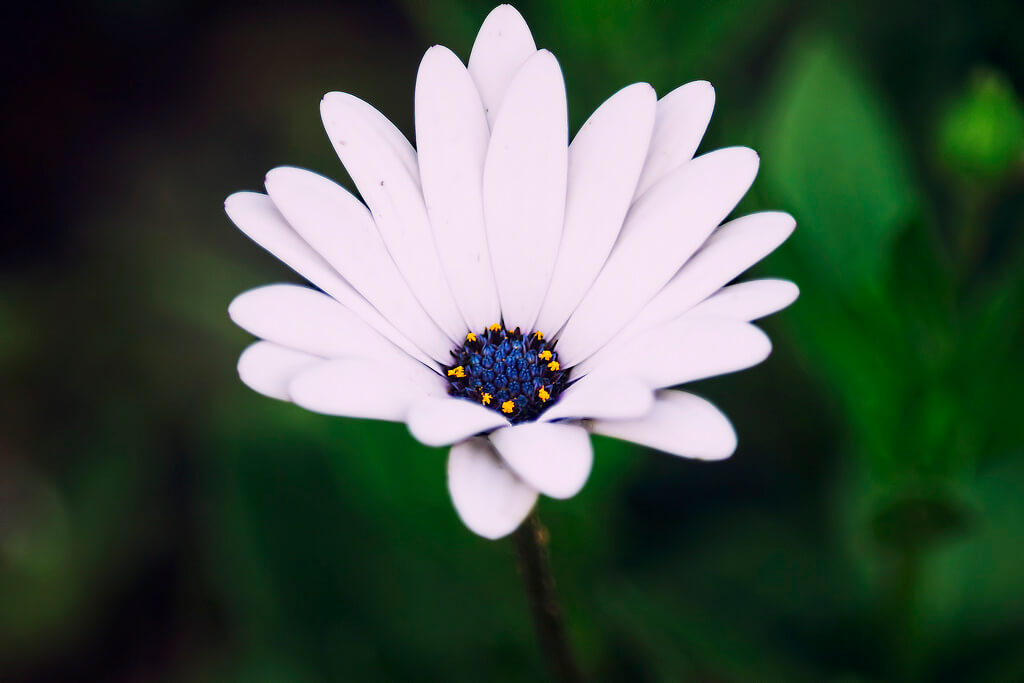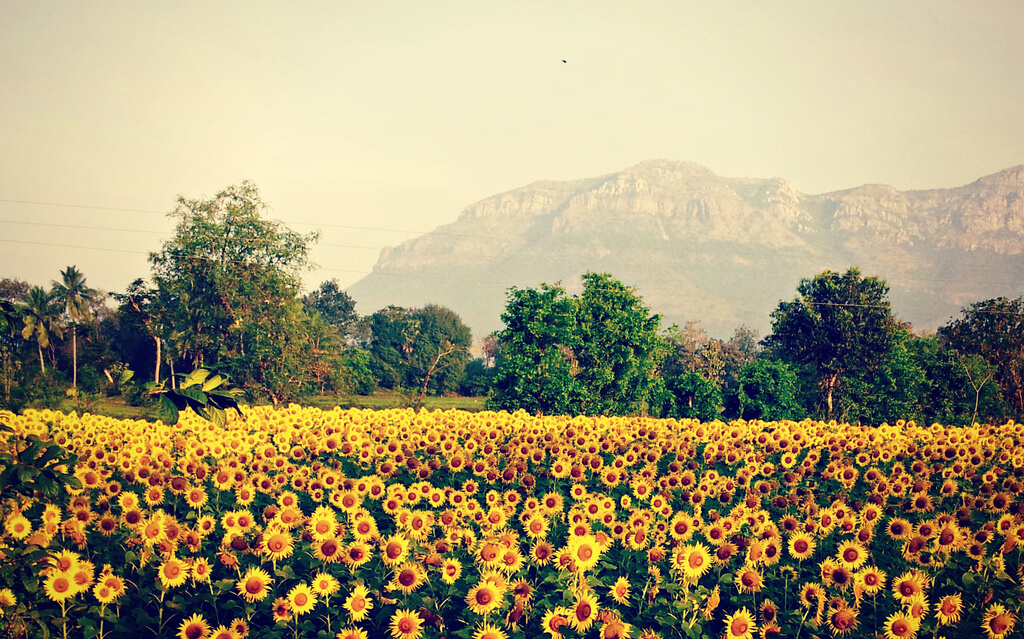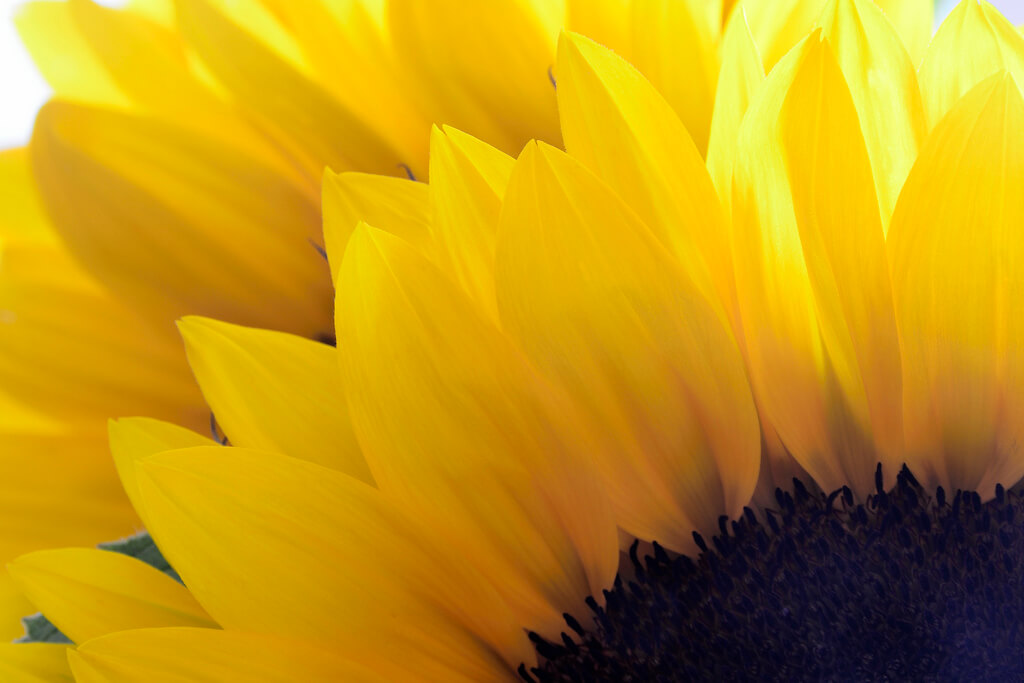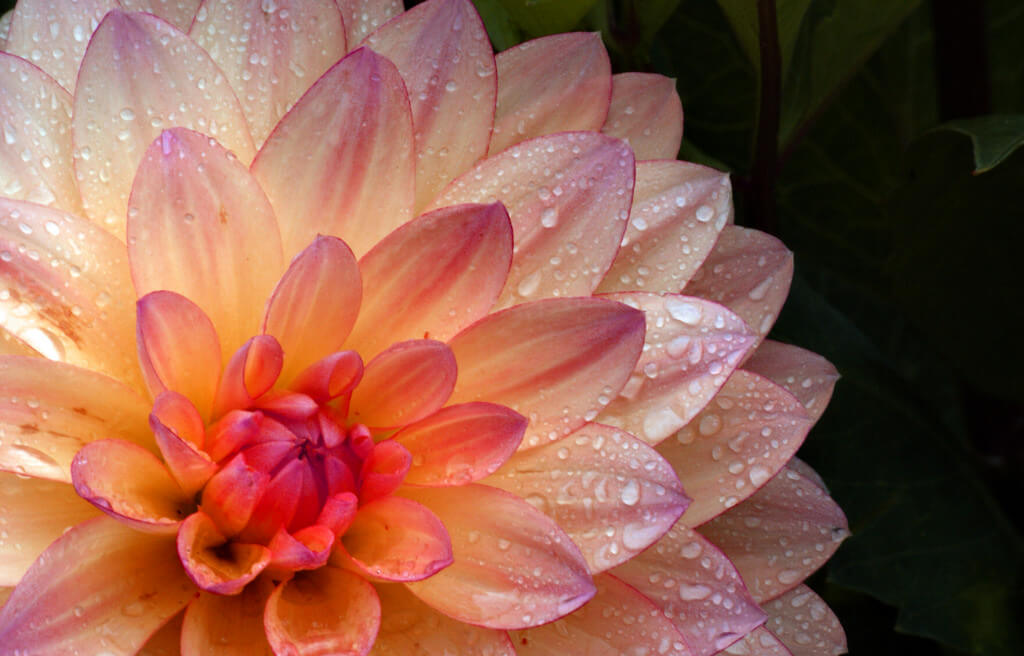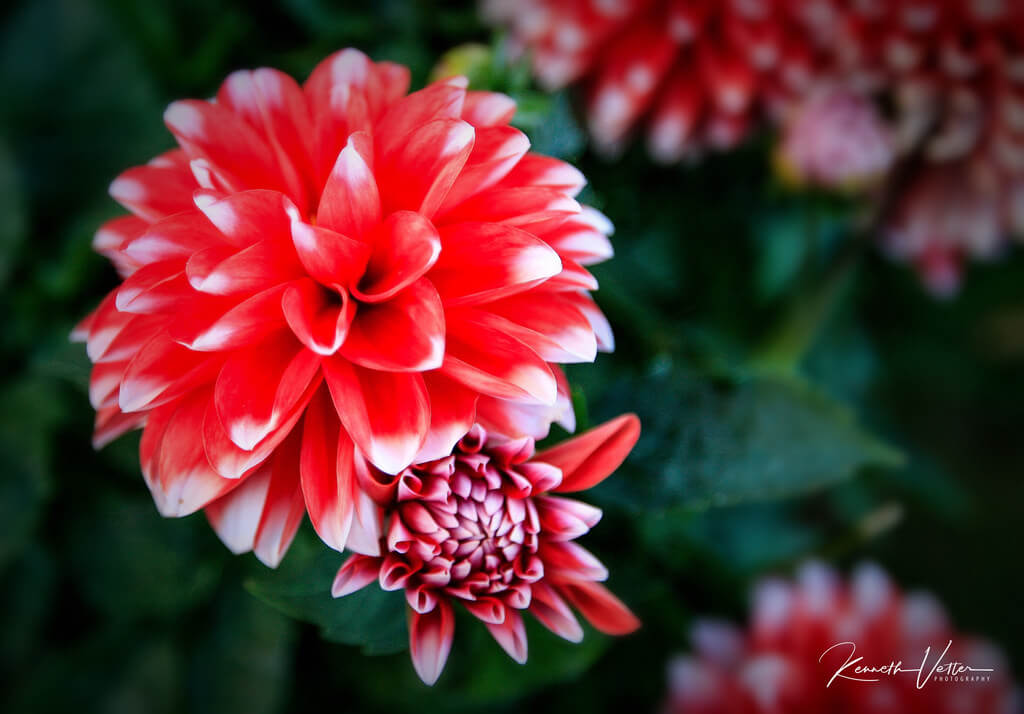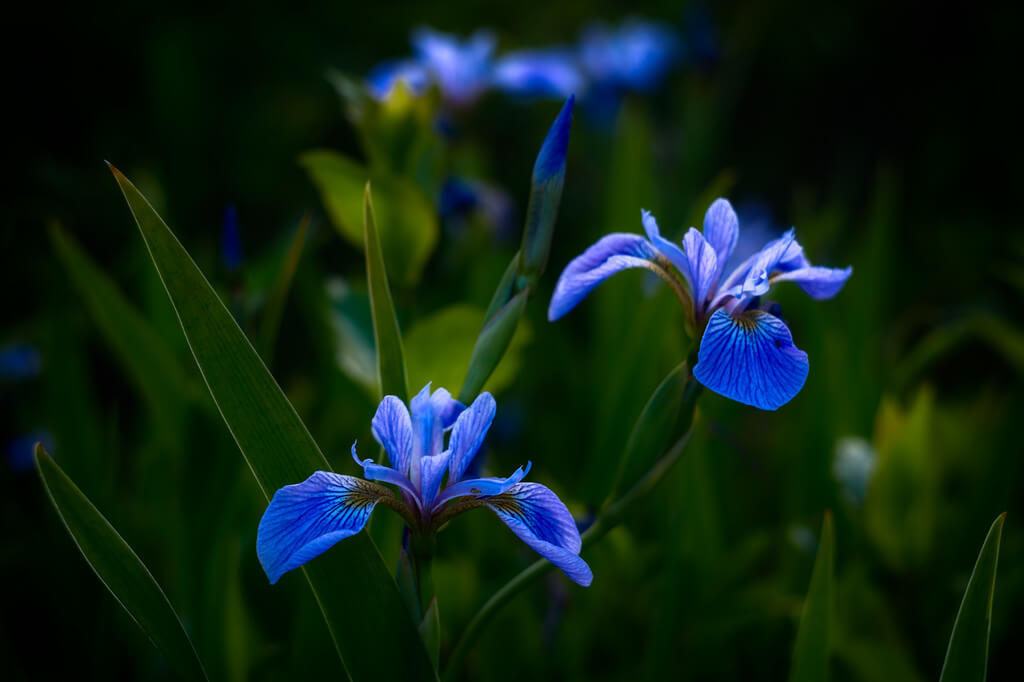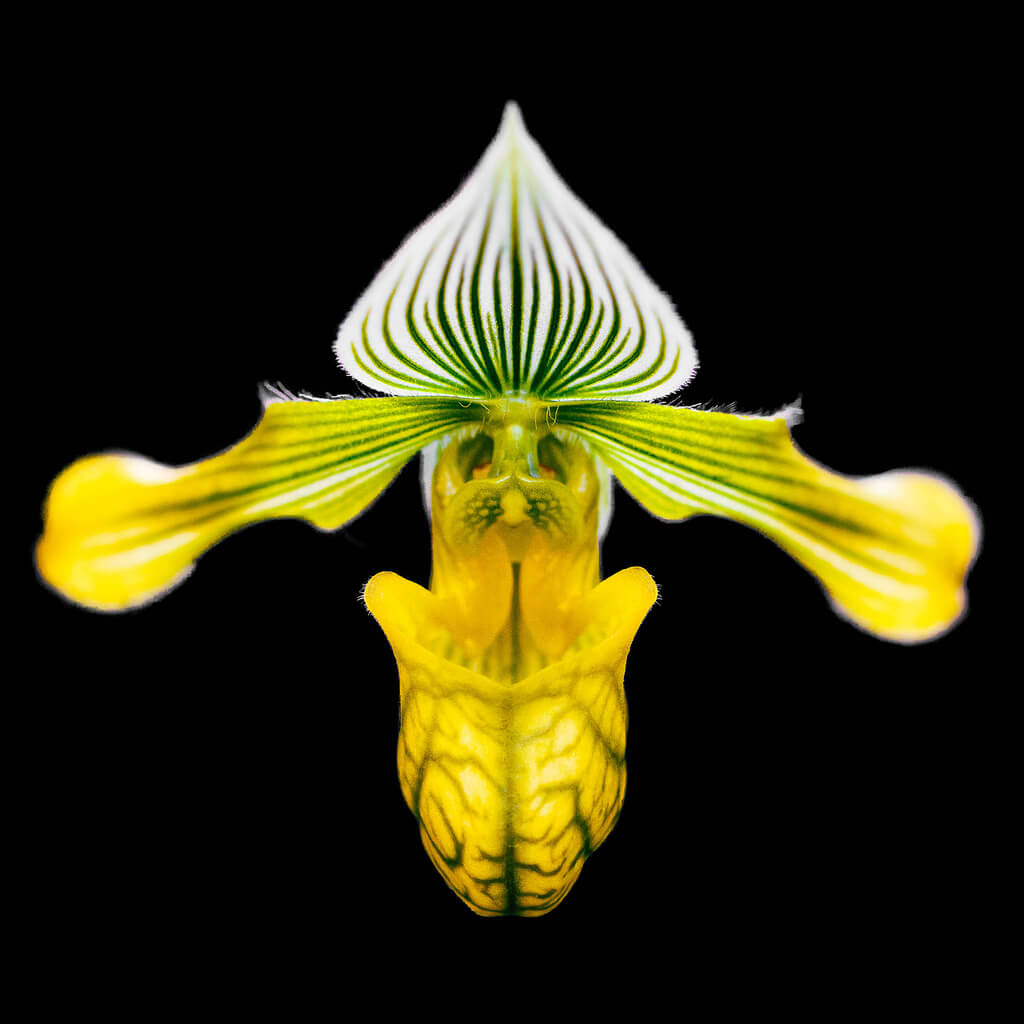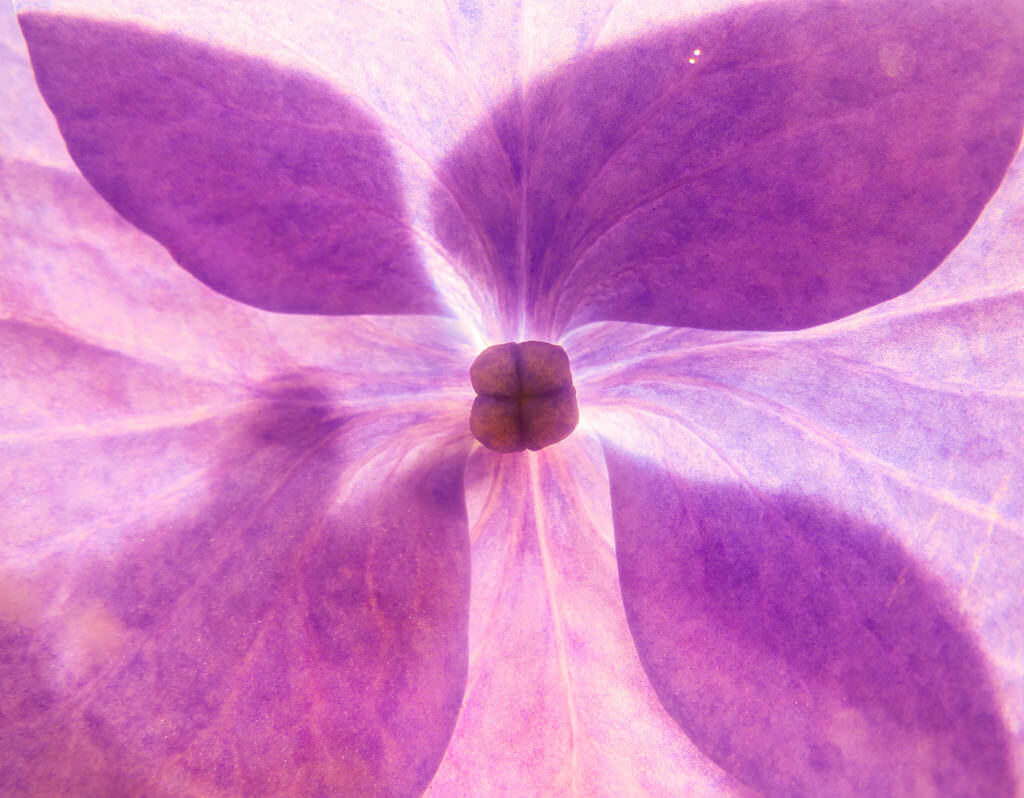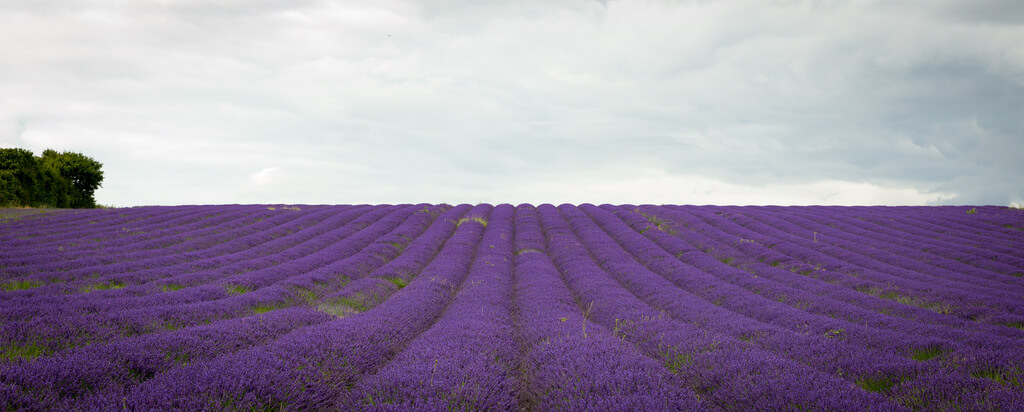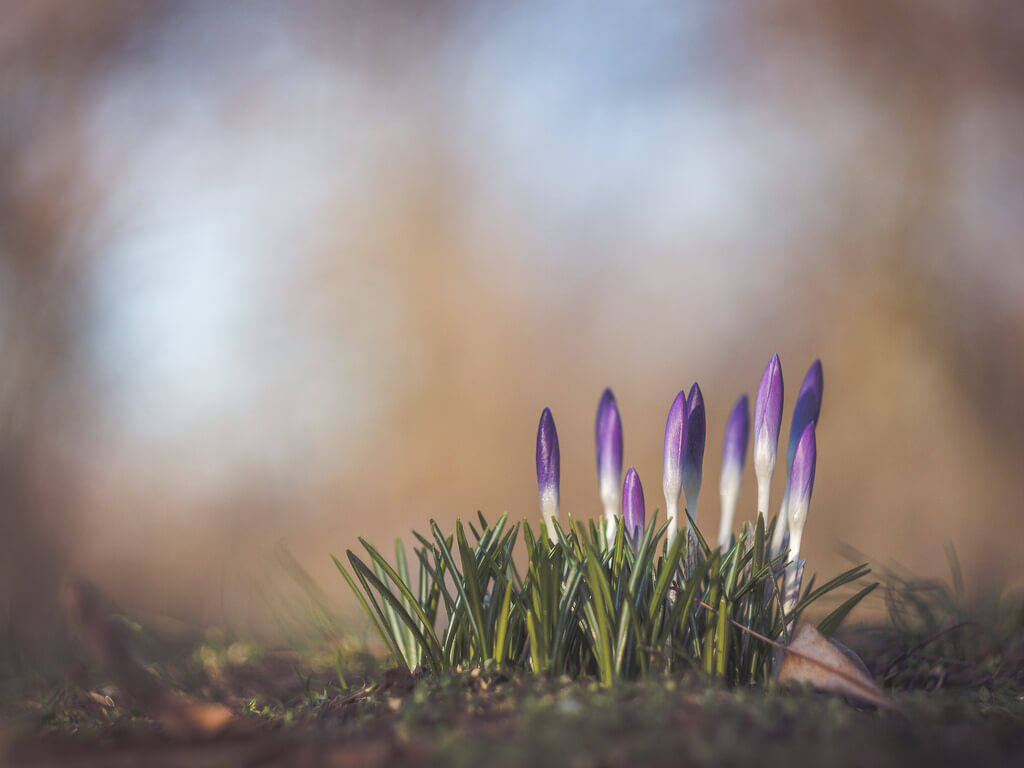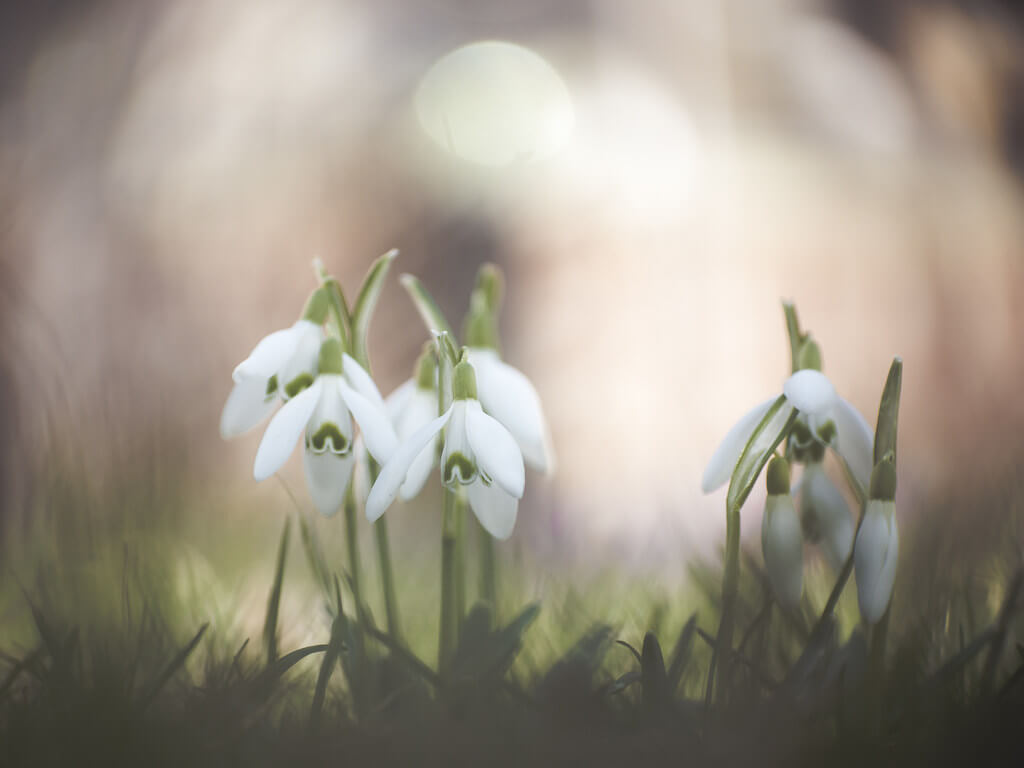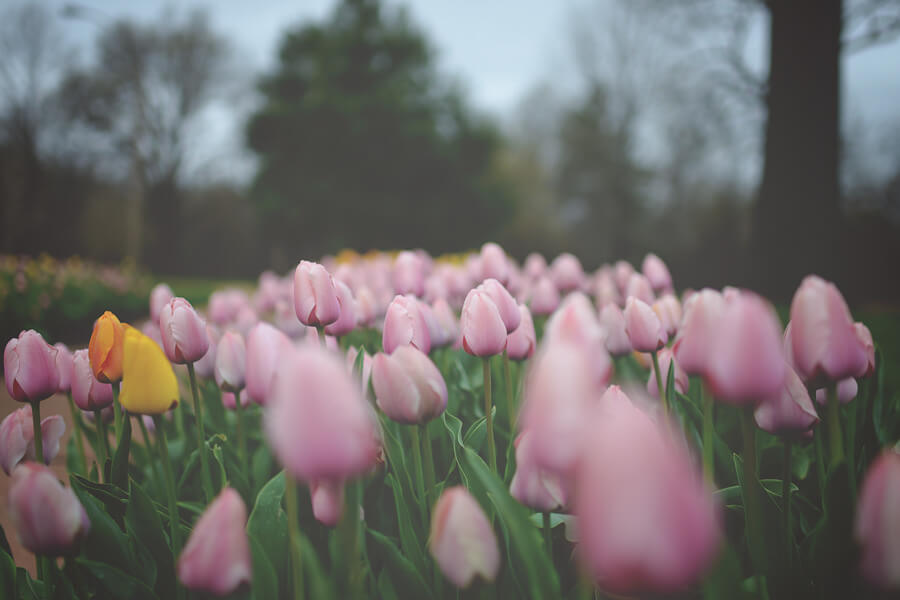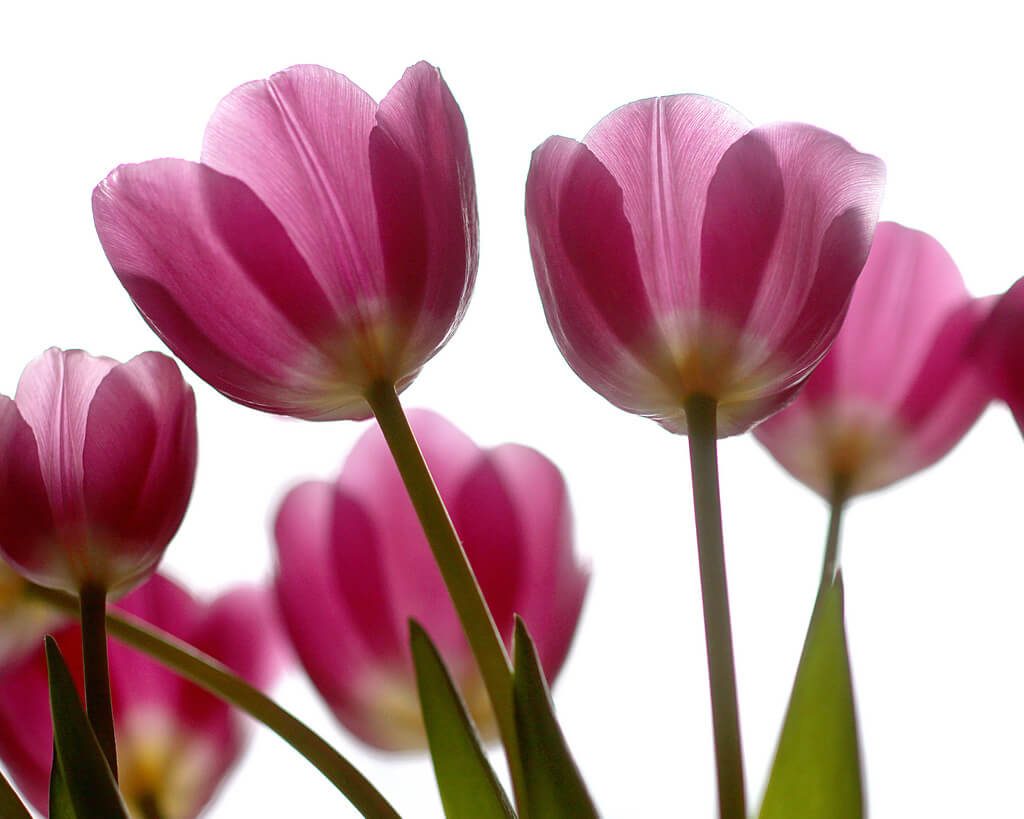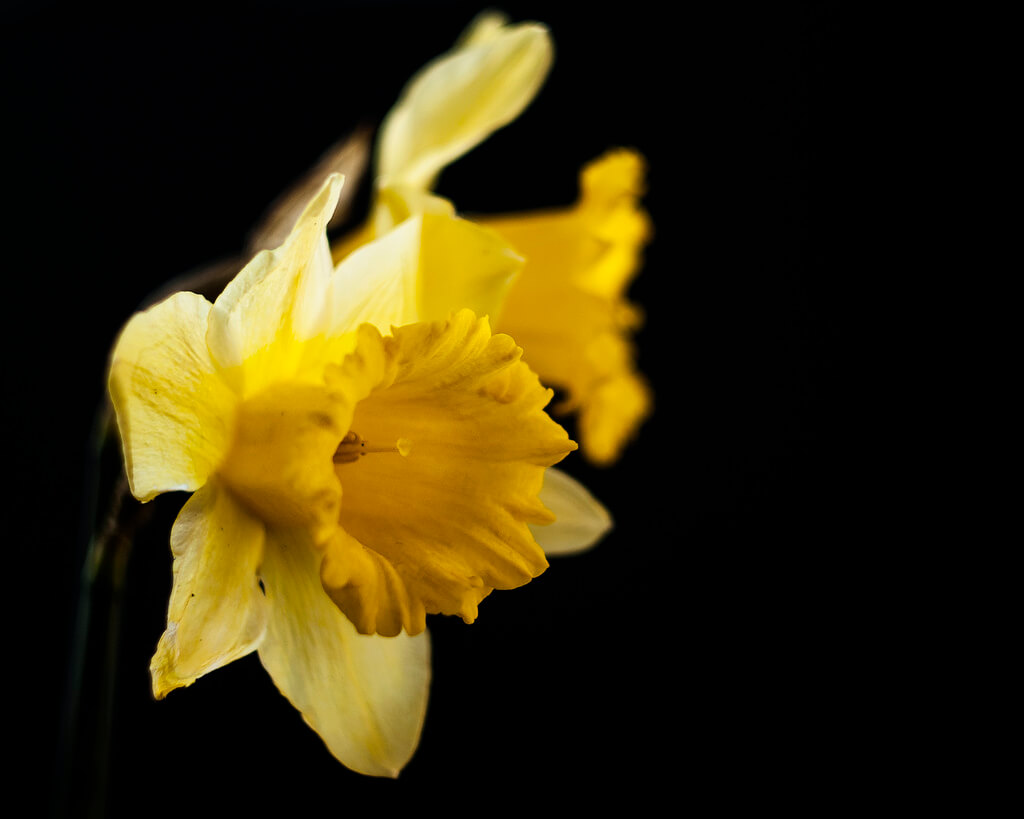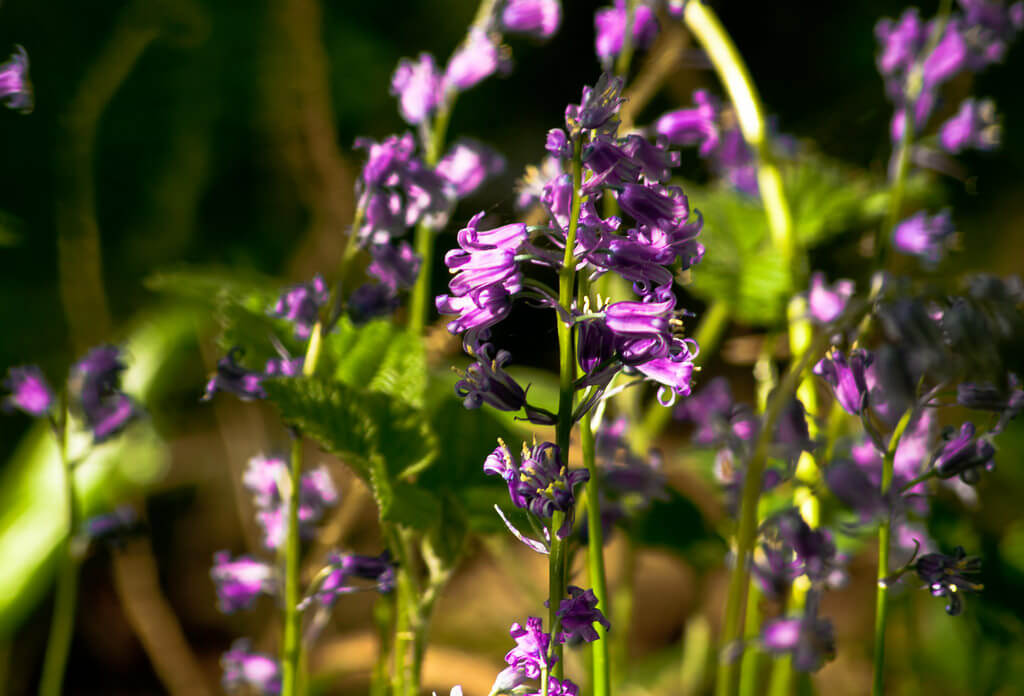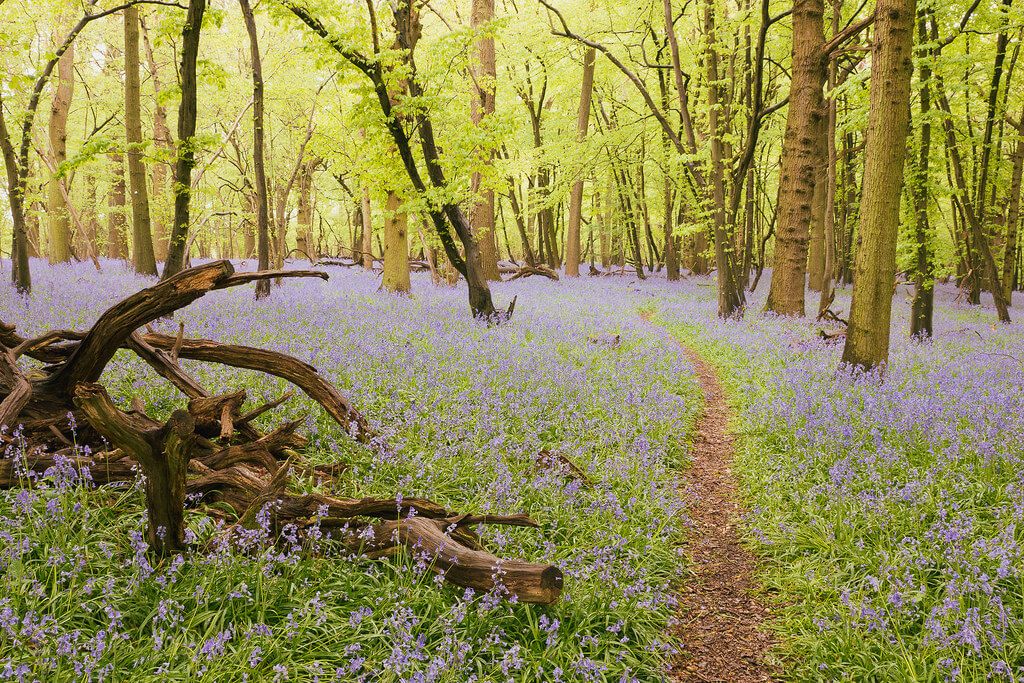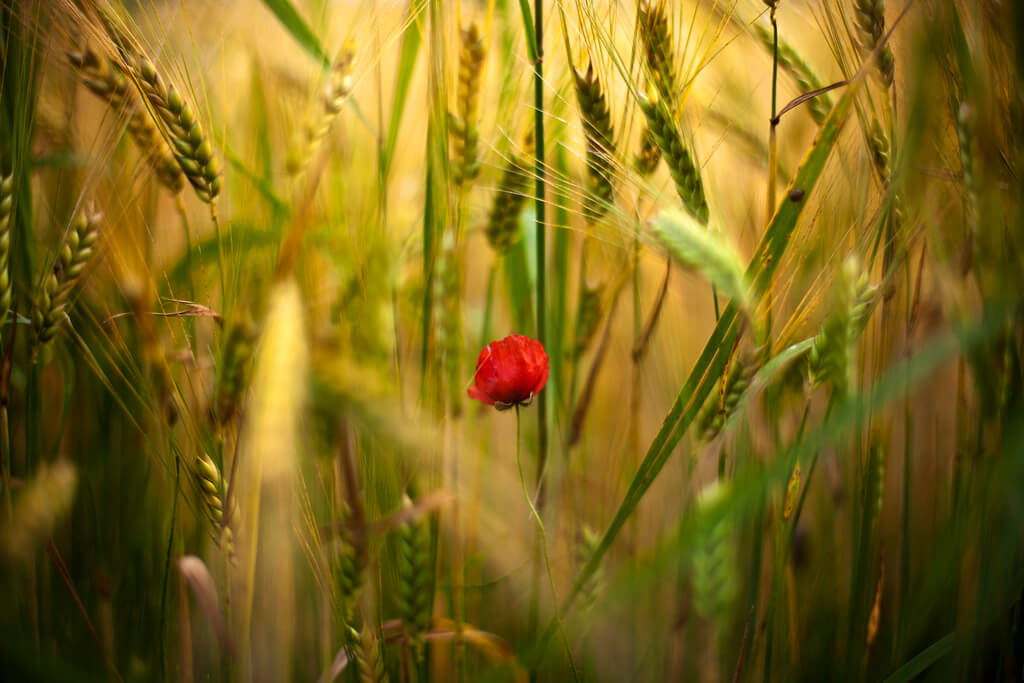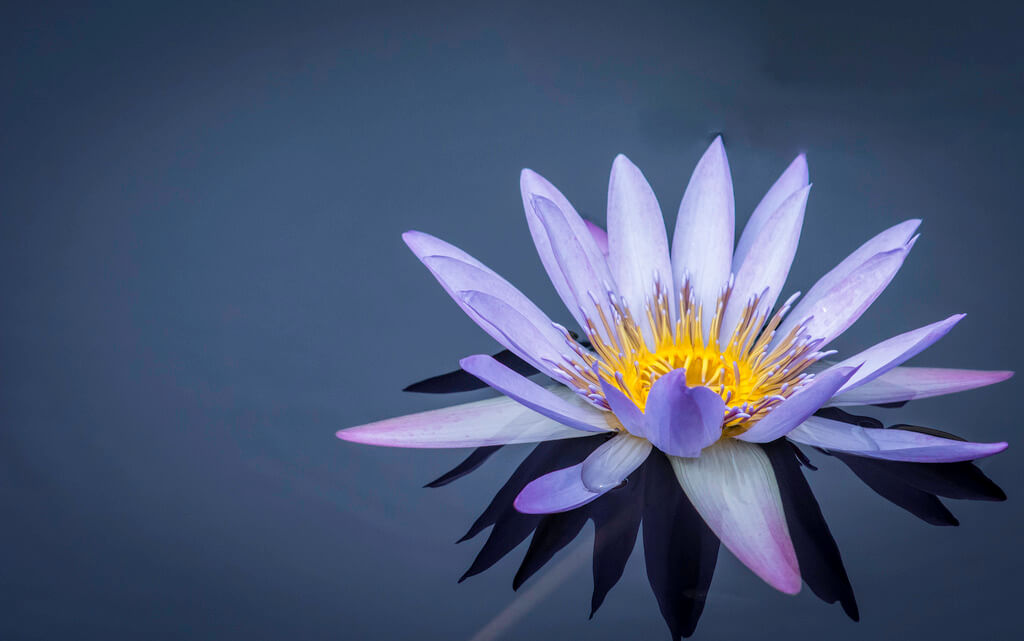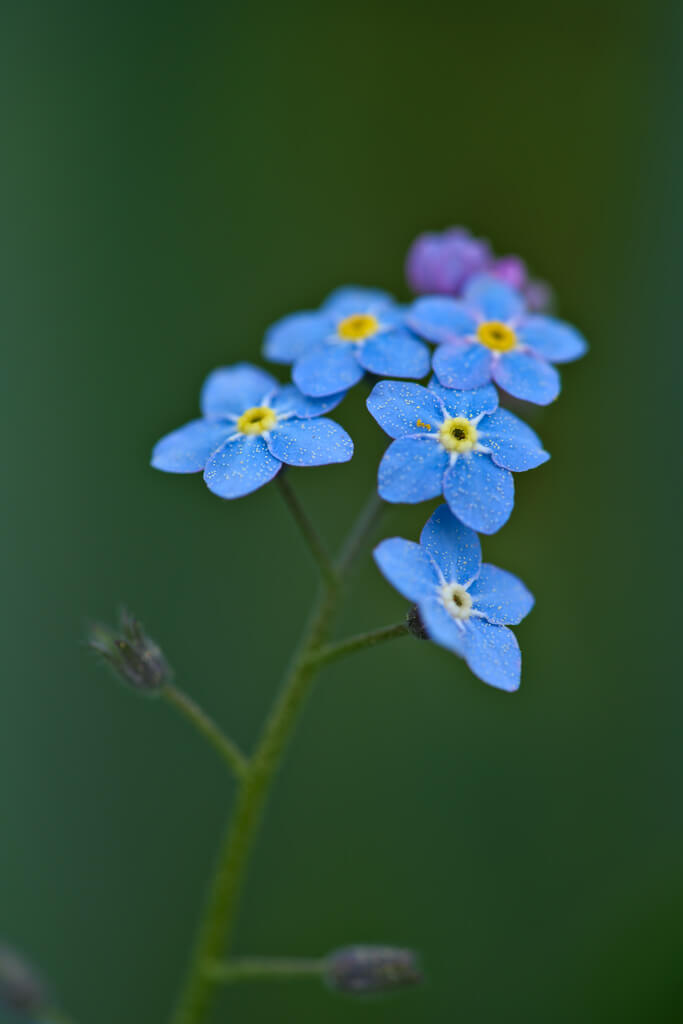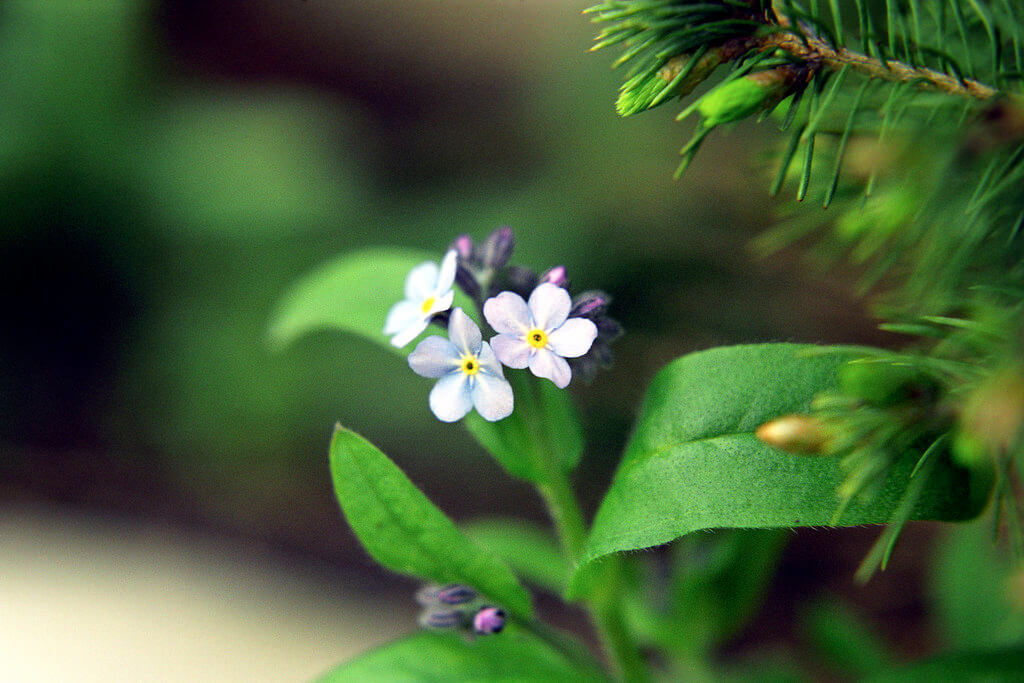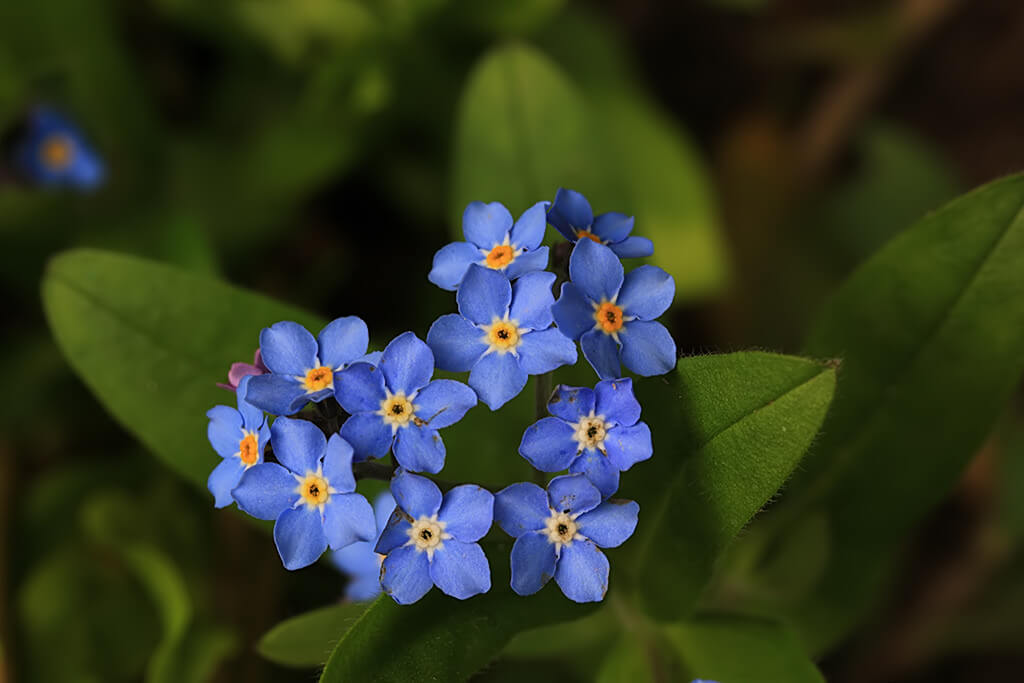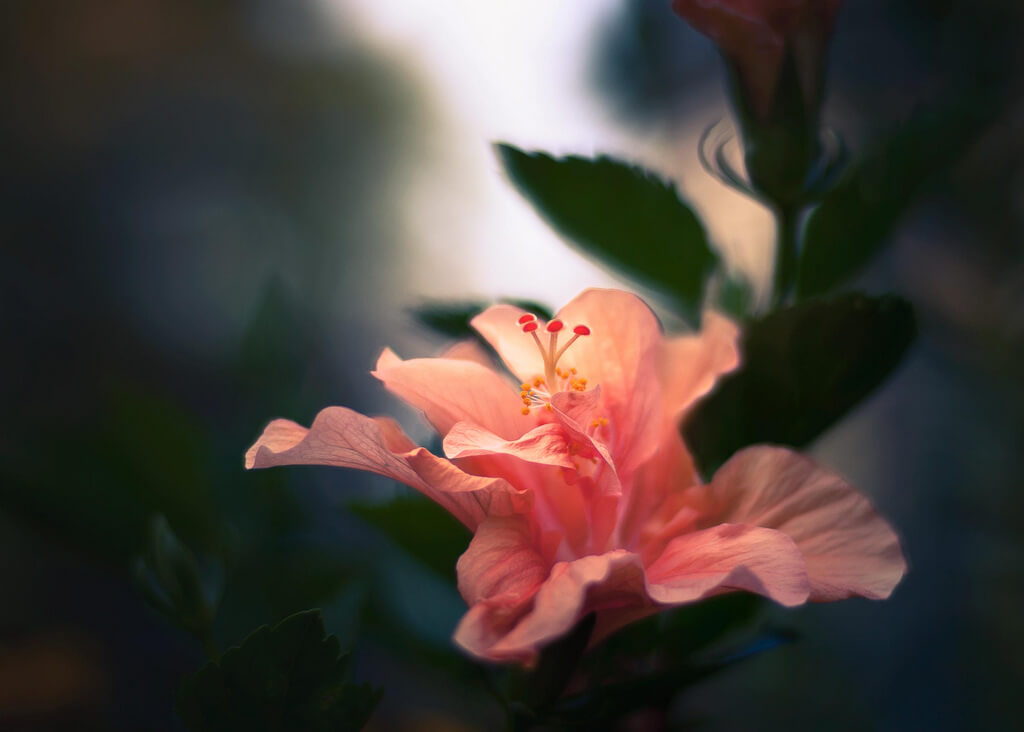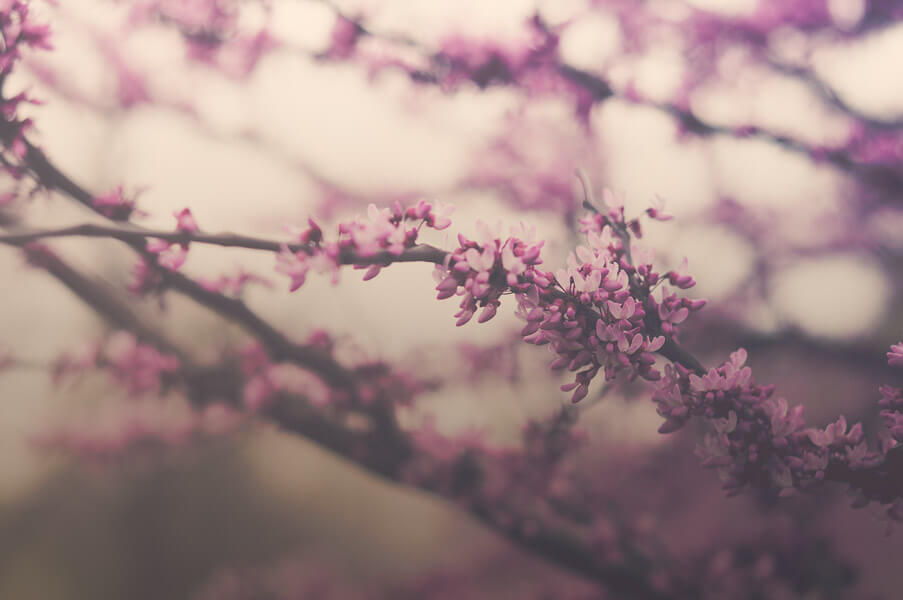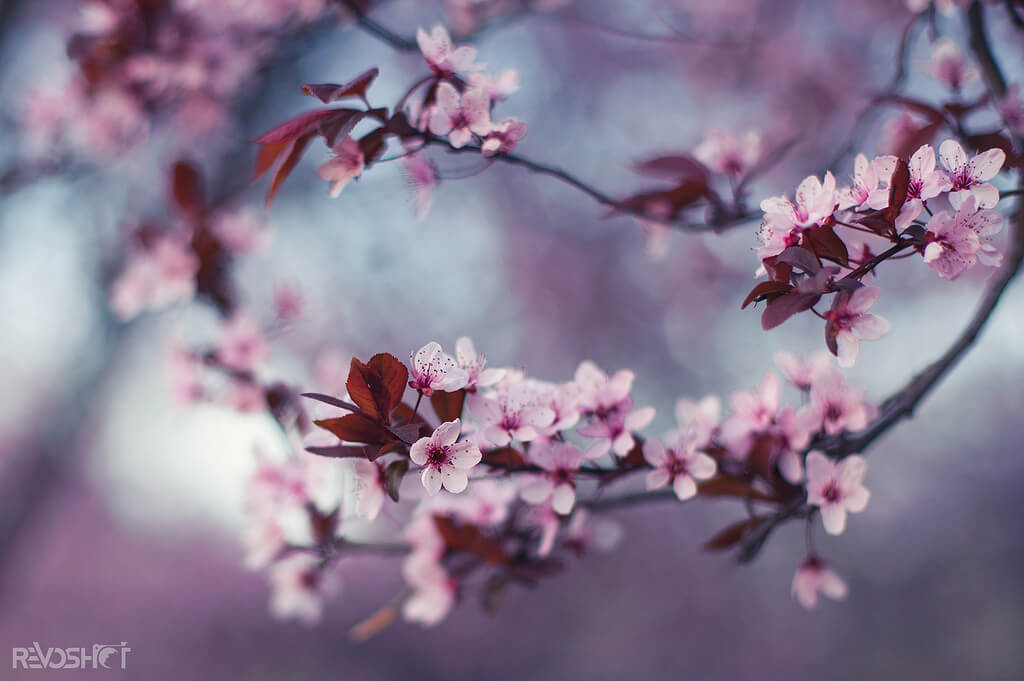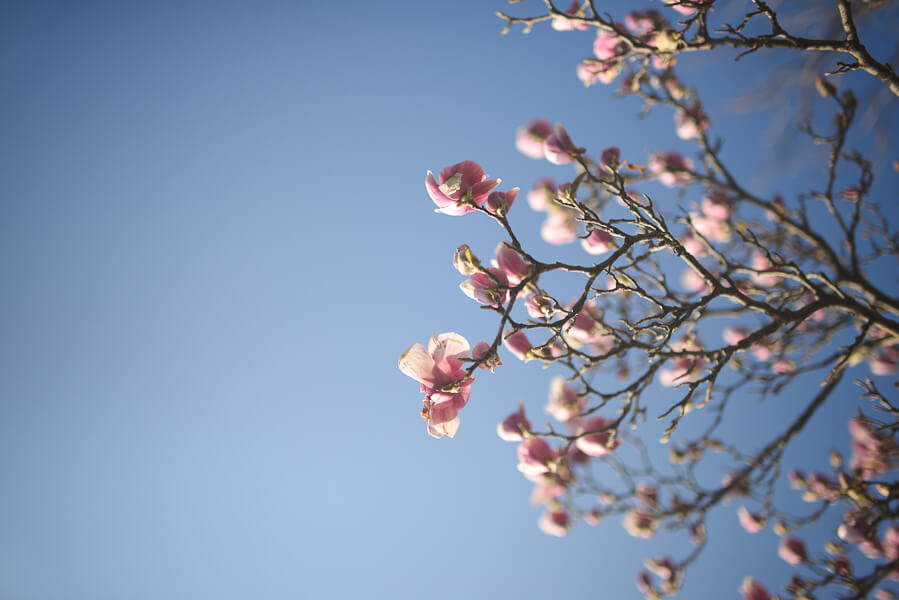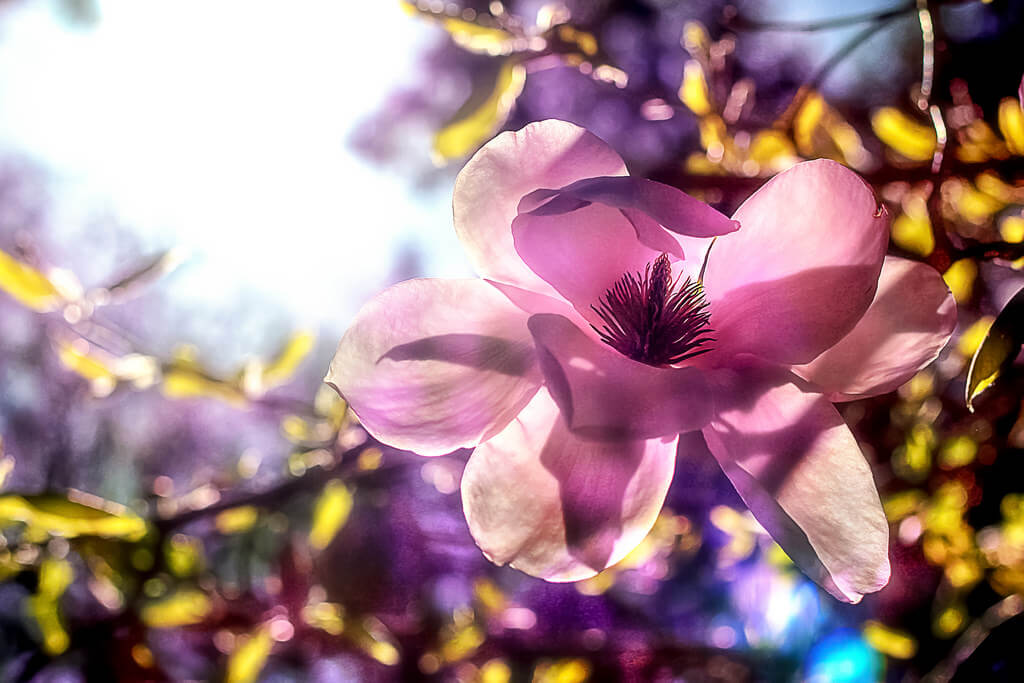Flowers are one of the most popular subjects among photographers. Their delicate beauty, bright colors, and symbolic meaning make them wonderful photography subjects. They’re also versatile. You can shoot a set of amazing macro flower pictures, or you can use them as lovely foregrounds/backgrounds for portraits and landscape photos. With the right light, you can get stunning pictures of flowers at almost every angle.
Steven Scott – Purple Yellow Pink
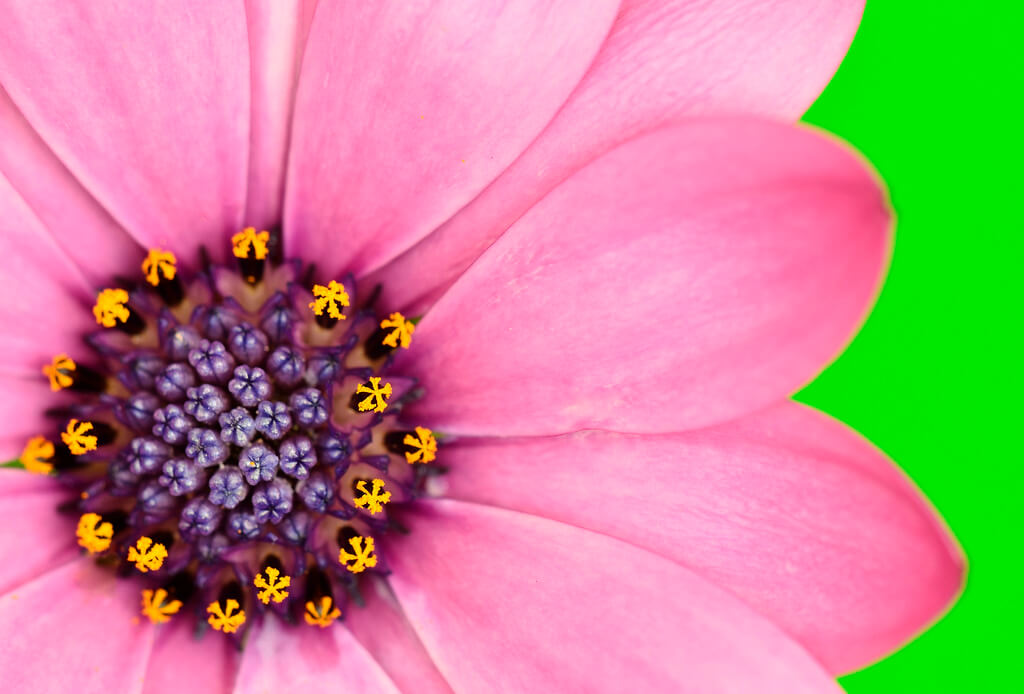
Tips for Shooting Flower Images
Here are a few quick tips for taking great flower images, followed by 55 beautiful pictures of flowers for your inspiration.
Find the best light for capturing pictures of flowers.
This can be said about pretty much any photo you’re trying to improve. Generally, with flowers, overcast days work the best. With a grayish-white sky, you’ll get a soft, even light that brings out the flowers’ colors.
However, you can still get great shots on a sunny day. In this case, try experimenting with backlight (when the sun is lighting the flowers from behind). Since flower petals are thin, the sun will shine through the petals and make the flower glow.
Backlight is easiest to capture at the end of the day when the sun is low on the horizon. It doesn’t have to be the Golden Hour yet, per se, but it wouldn’t hurt. That warm, golden light makes everything more beautiful.
Nevertheless, don’t feel limited by these two conditions. You’ll find that the appearance of flowers changes at different times of the day and with different lighting conditions. That’s why, if you find a great field of flowers, it’s worth visiting it often to see what lighting works best for the image you’re trying to capture.
Turn off your camera’s autofocus.
If you’re using a digital camera, you don’t have to get every shot perfect. You can take thousands of shots and not have to develop all of them. You can just choose the best image off the card.
In other words, you have plenty of time to be patient and get the right shot. You don’t have to run around the field, snapping as many photos as you can with your camera on full auto. You can sit down with a single flower and take your time.
Set up the camera in manual mode, test out different compositions and settings, and really concentrate on creating a sharp image. Turning off the autofocus allows you to focus exactly on the point in the flower composition that you want to capture. This way, you can create an image that’s truly unique.
Find out the name of the flower you’re shooting.
This isn’t exactly related to photography, but it’s still useful. There’s nothing like stumbling over your words when you try to explain the kind of flower you photographed. Getting into flower photography gives you a chance to learn more about botany and better understand the subjects you’re shooting, including their names.
55 Pictures of Flowers
Here are some of the best flowers to photograph. Though many other types of flowers look beautiful in photos, these flowers are especially popular among photographers.
- Daisy
- Sunflower
- Dahlia
- Coneflower
- Iris
- Orchid
- Rose
- Lilac
- Lavender
- Crocus
- Tulip
- Daffodil
- Bluebell
- Poppy
- Lotus & Water Lily
- Forget-Me-Not
- Morning Glory
- Hibiscus
- Cherry Blossom
- Magnolia
Daisy
There are over 32,000 species of daisies in the world. In other words, if you’re ever unsure what you’re photographing, there’s a high chance it’s a daisy of some type. Fortunately, daisies look fantastic in photos. Their simplicity makes them easy to photograph and lovely to look at.
Rubem Porto Jr – White Daisy, Hampton Court, England
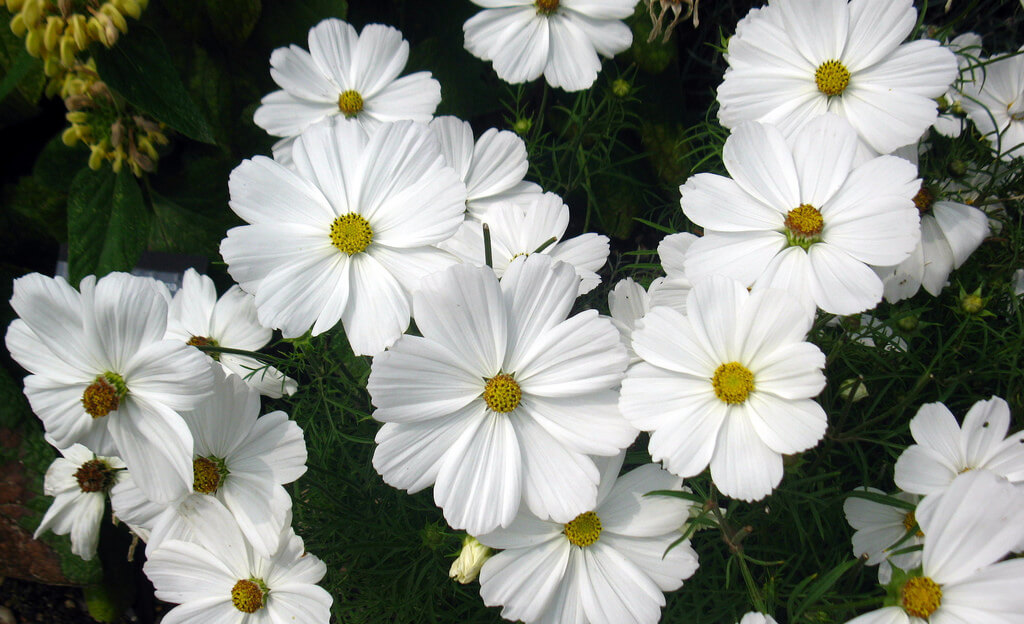
Tenia Prokalamou – He loves me, He loves me not…
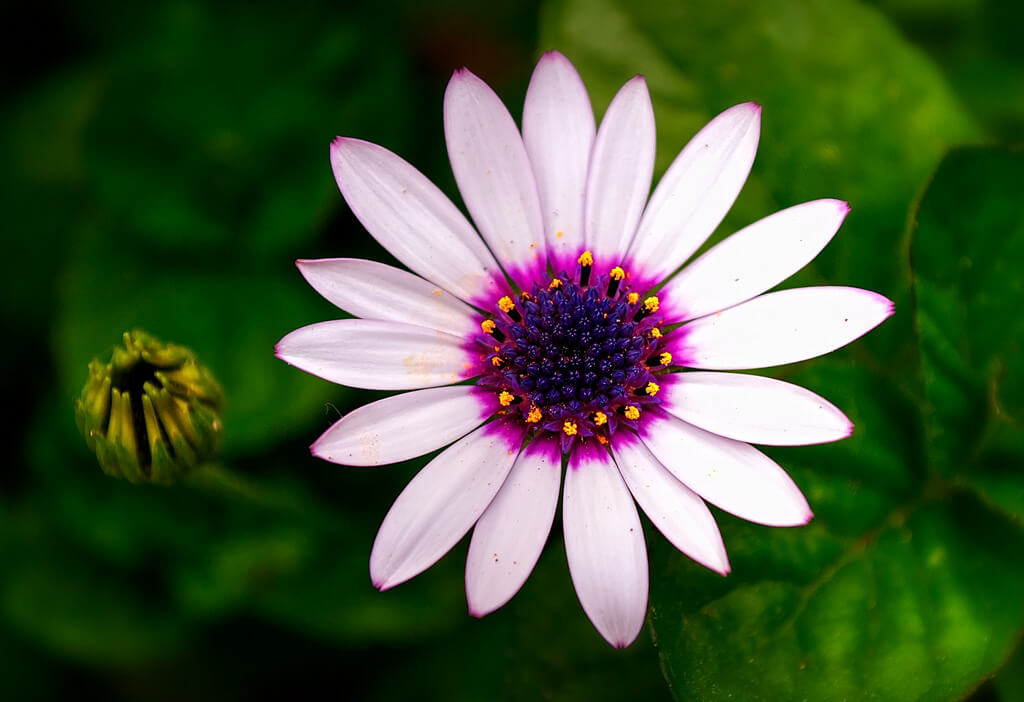
Sunflower
Sunflowers are part of the daisy family. They share many of the same characteristics as small, common daisies, only they’re much larger and have a bright yellow hue that can’t be missed. Their size and colorfulness make them beautiful subjects to photograph, especially when there’s a field full of them.
Fotis Mavroudakis – Sunflower field

Dahlia
Dahlias are also in the same family as daisies and sunflowers, though they have a more lavish appearance. They have several rows of petals, which makes them look more luxurious than common daisies – though they’re just as photogenic.
Renaud Torres – Dahliaddiction
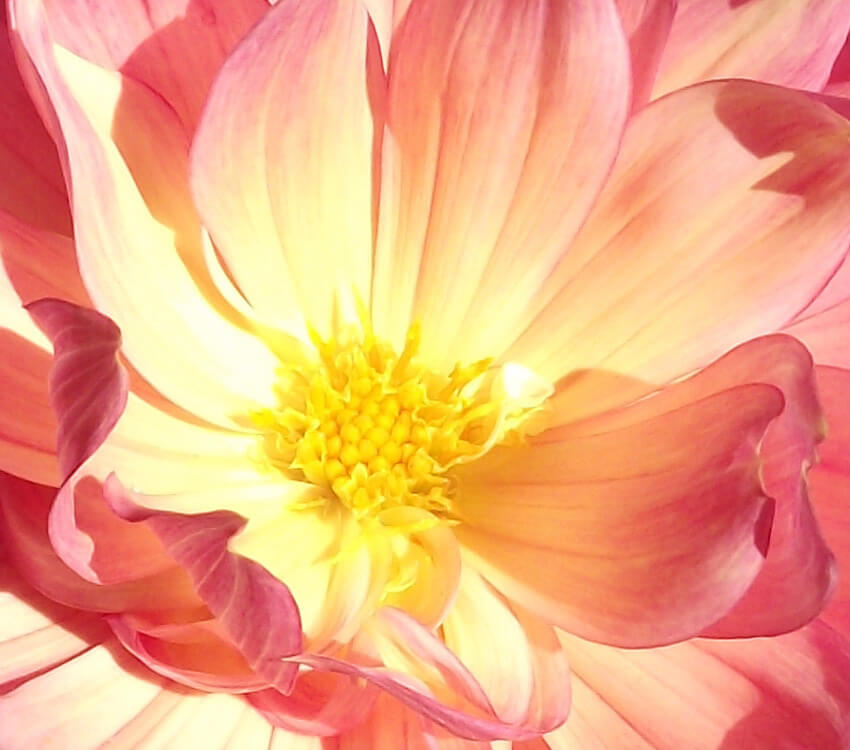
Coneflower
Yet another member of the daisy family, coneflowers are common in the dry prairies and open woodlands of North America. Also known as echinacea, the flowers have historically been used to treat cold symptoms such as coughs and sore throats. But for photographers, their main appeal is their beauty. With graceful, drooping petals and vibrant colors, coneflowers brighten up American landscapes.
Donnie Nunley – Aging with Grace
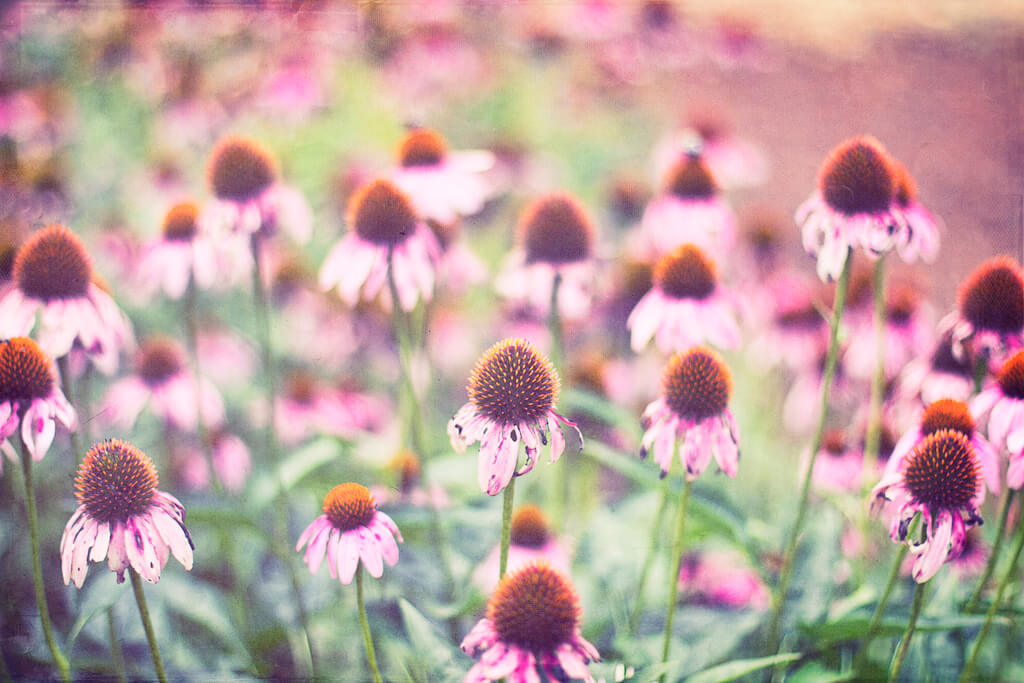
Anne Worner – Coneflowers – color version, vintage look
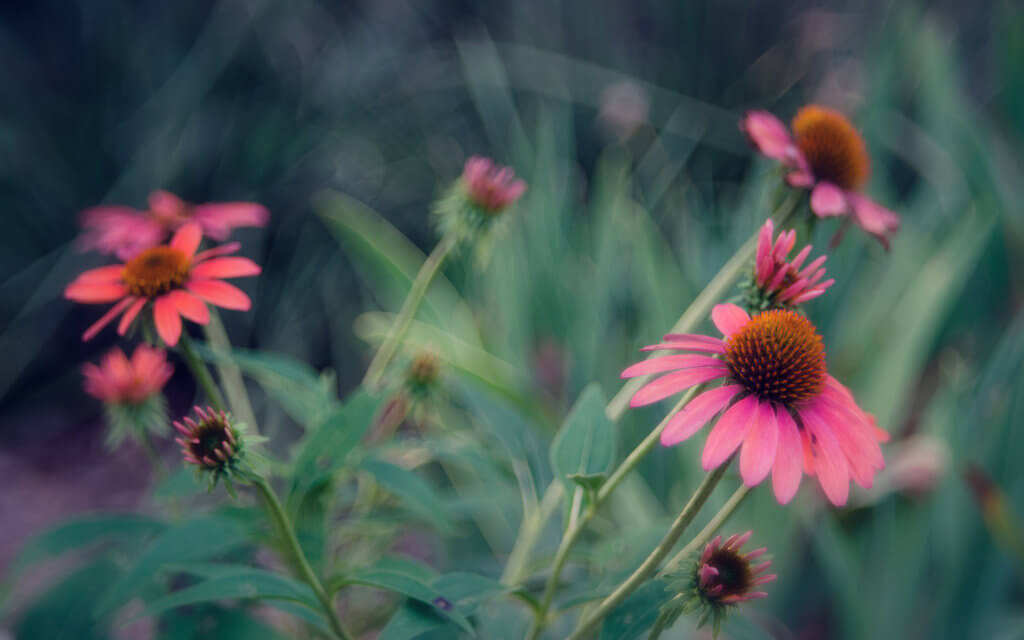
Iris
Unlike daisies, irises have a more complex shape that can sometimes be challenging to photograph. Some photographers enjoy this challenge, as it forces them to think more creatively. Irises can be attractive photography subjects because they’re so colorful, too. In fact, their name comes from the Greek goddess of the rainbow, Iris, due to their wide variety of colors.
R Casey – another spring thought
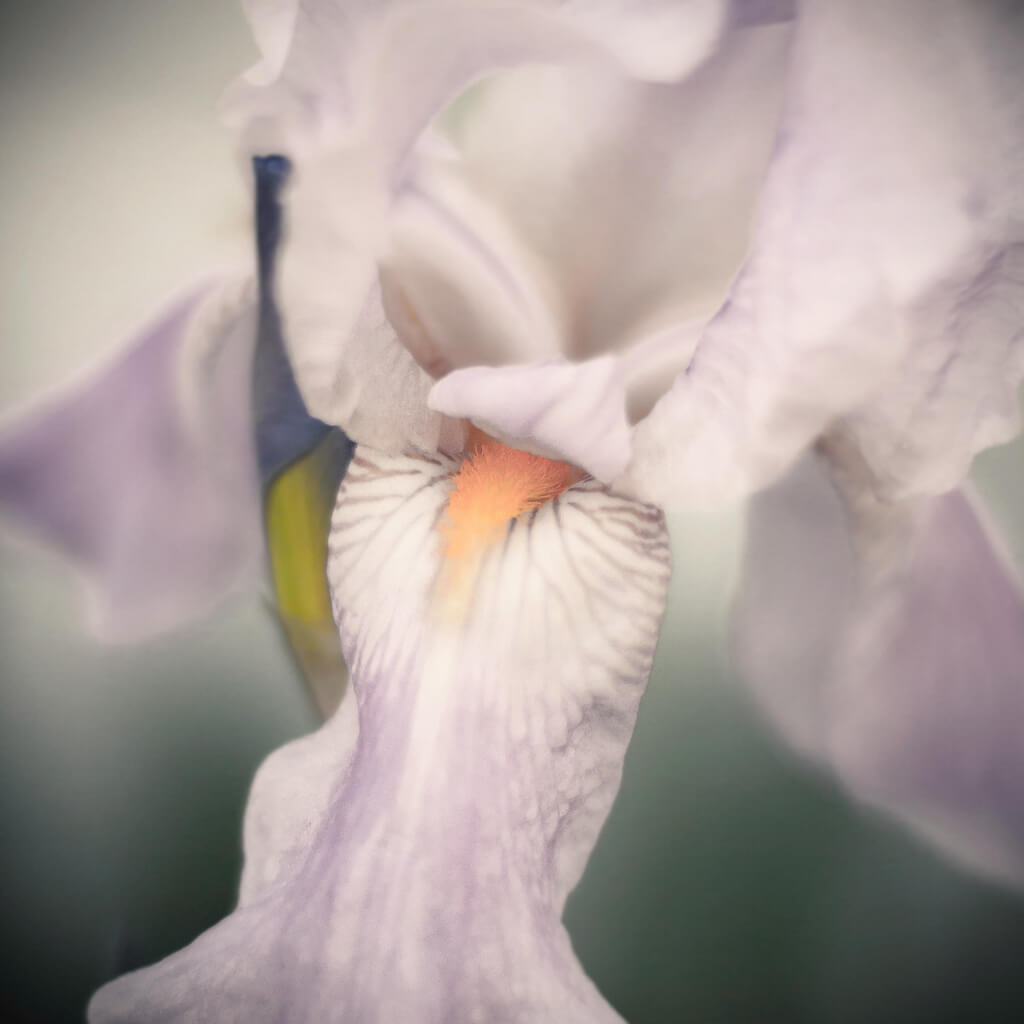
Orchid
Like irises, orchids have a graceful, complex shape that’s beautiful to look at but tricky to photograph. If you have trouble taking a good photo, try placing them against a dark background. A dark backdrop will bring out their colors and help you find the right angle to capture their beauty.
Barbara Schultheis – Lady Slipper Wild Orchids
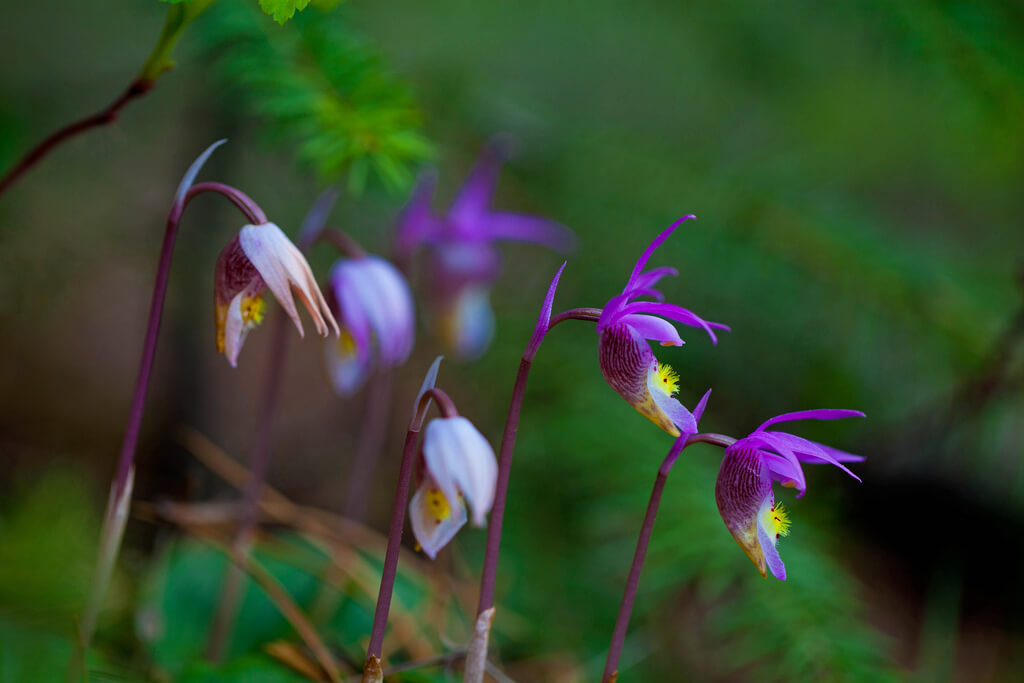
Rose
Roses are one of the most popular flowers to give as a sign of love, but they’re also lovely to photograph. In the right season, you can visit a rose garden and shoot an incredible variety of roses within a couple hours. But even a single rose from the store can lead to great photos.
For more pictures of roses, check out these 35 beautiful rose photos.
tuvidaloca – »The Four „Rosie“ Tops«
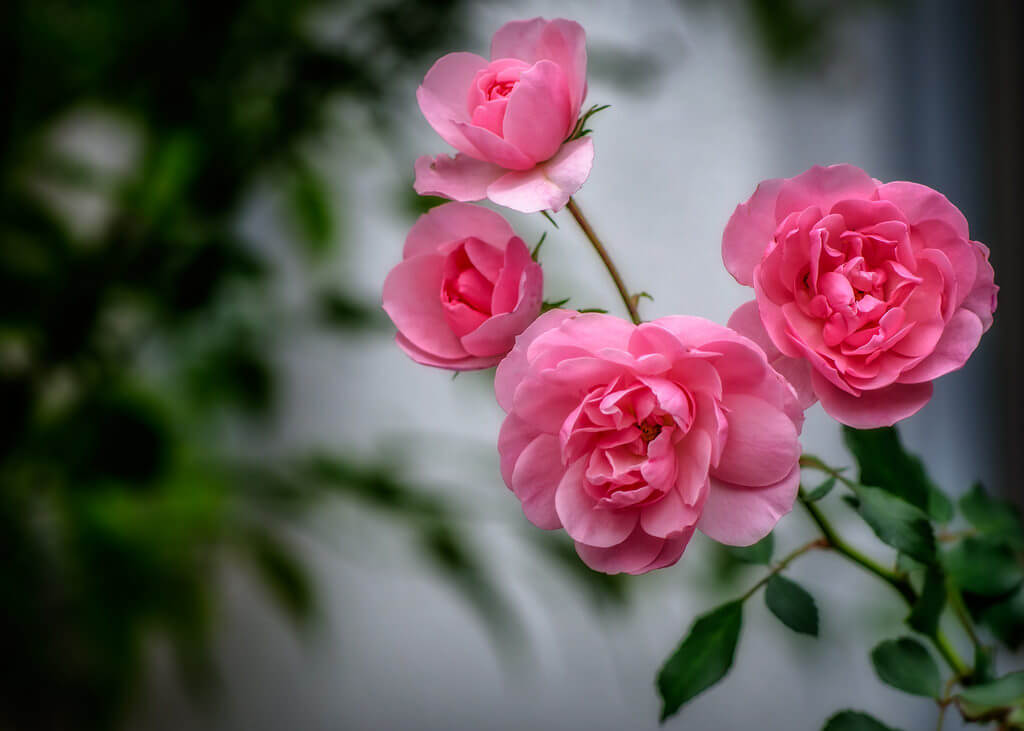
Joanne Levesque – Coeur de Rose (Rose’s heart)
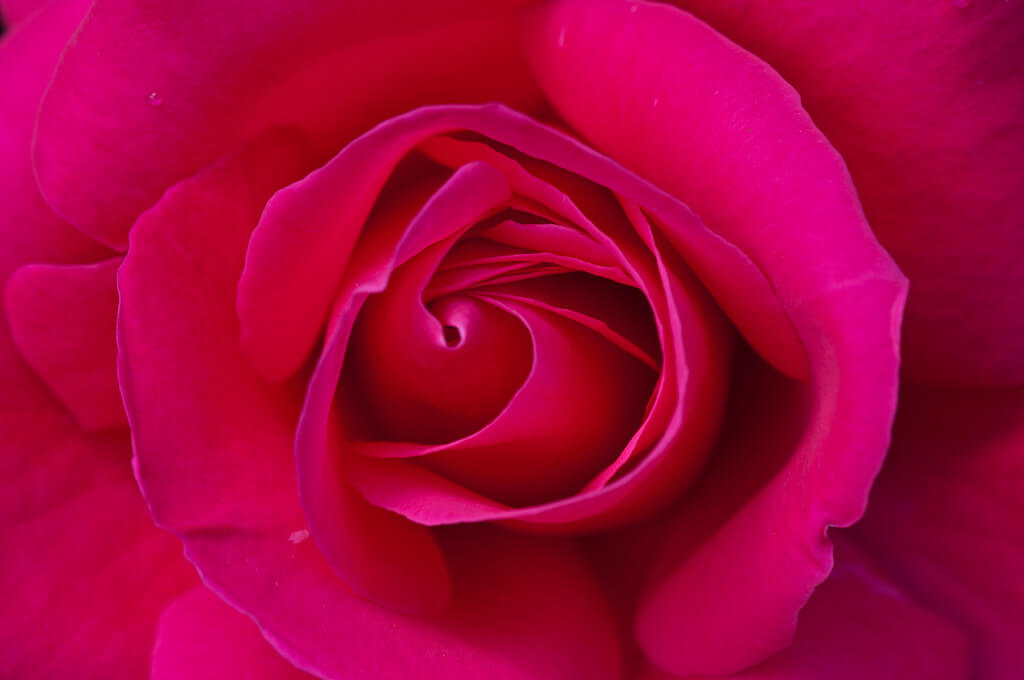
Lilac
Lilacs appear in the early summer, just before other summer flowers (like roses) start to bloom. They’ve become a popular plant to grow in parks and gardens because of their sweet-scented flowers, which are lovely to smell and to photograph.
Sherri Yezbick-Taylor – Lilacs
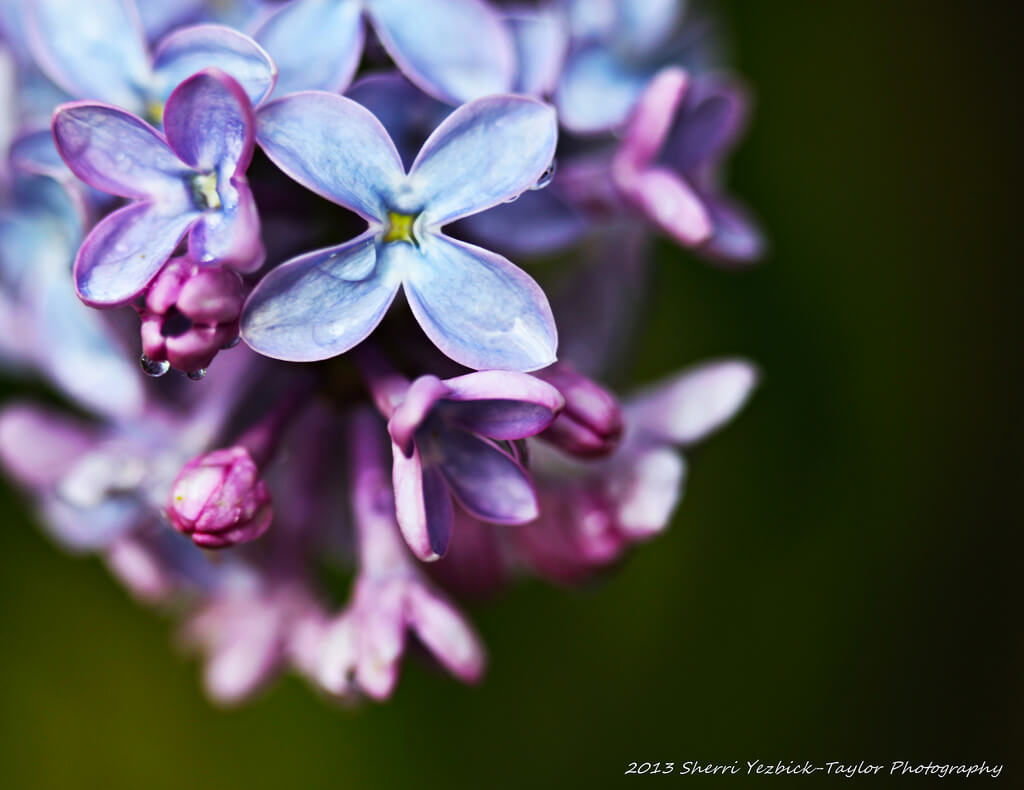
Rachel Kramer – Lilac Happy Fence Friday
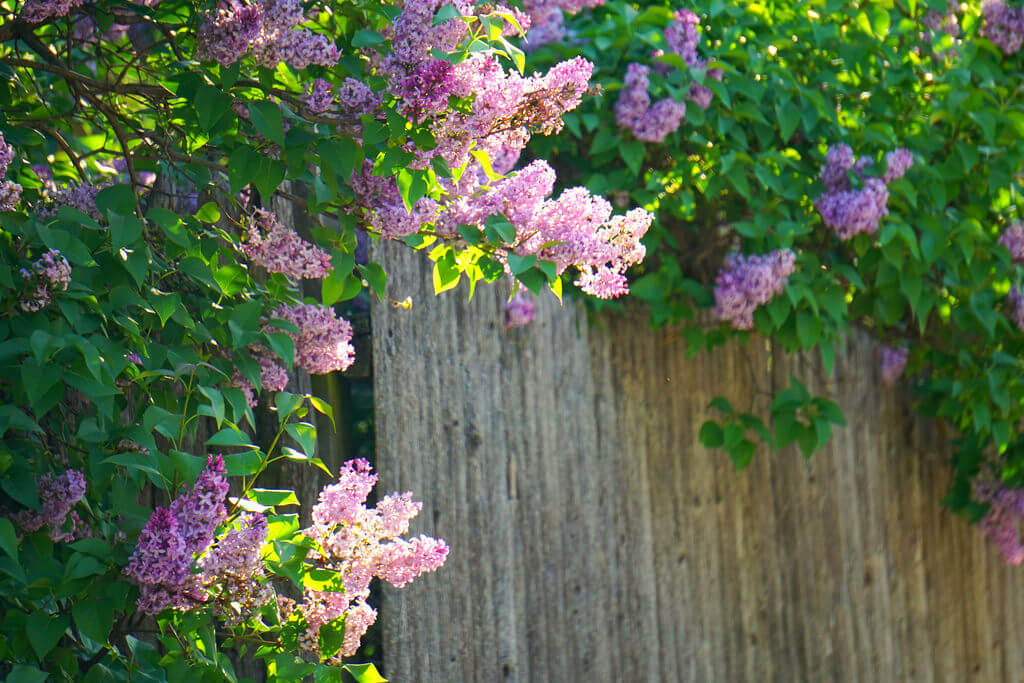
Lavender
Lavender and lilac are often confused. Both are used as perfumes and have purple flowers, but besides that, they’re quite different. Lilac flowers blossom on a shrub or tree, while lavender flowers sprout from the ground. In the summer when lavender is in bloom, you can visit France to get impressive photos of lavender fields – a landscape of deep purple, stretching to the horizon.
Sandrine Néel – Mon terrain de jeu
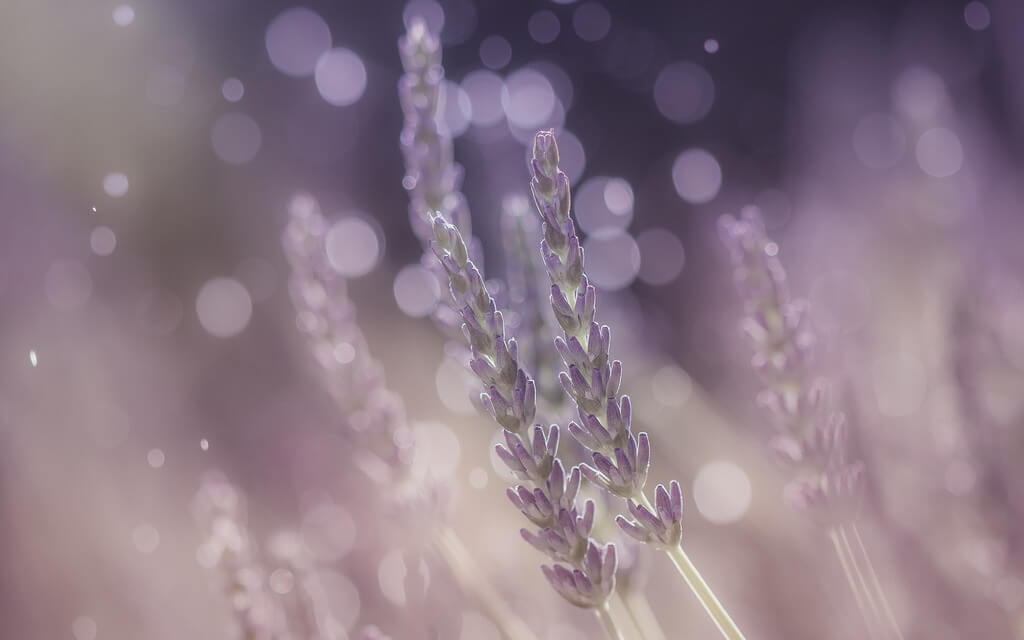
Federica Giordano – call it Magic
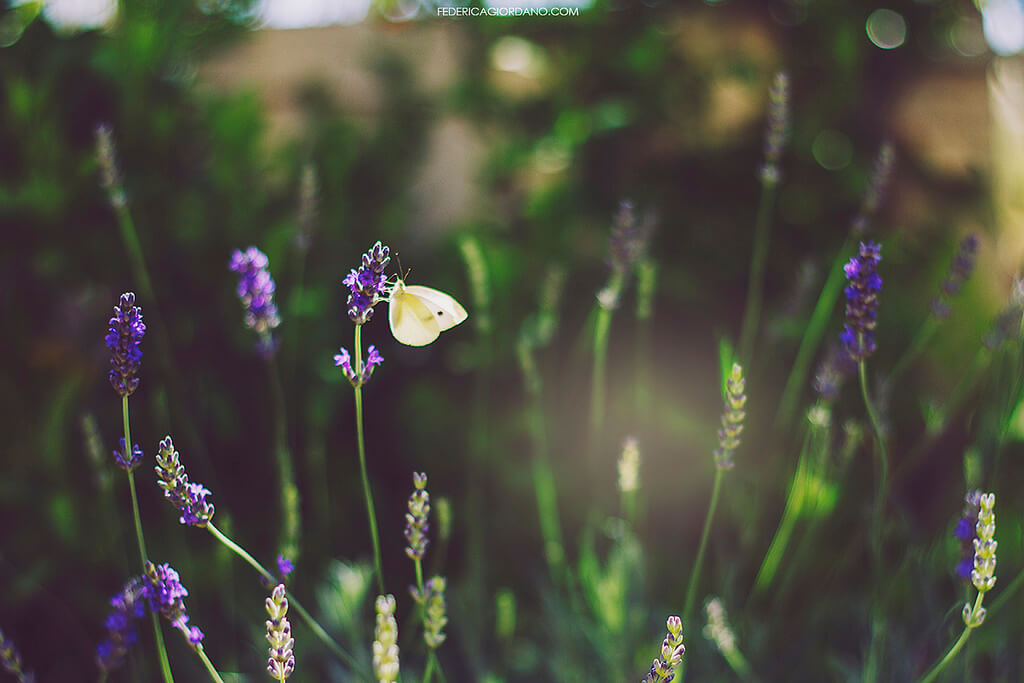
Crocus
Crocuses and snowdrops are unique flowers because they flourish in late winter and early spring, when other flowers haven’t even begun to appear. They’ve been known to poke through snow, bringing unexpected life into a winter landscape. They’re one of the first signs that spring is on its way – a welcome sight for flower photographers.
Bernhard Friess – Explored: Crocus and Snowdrops / Krokusse und Schneeglöckchen
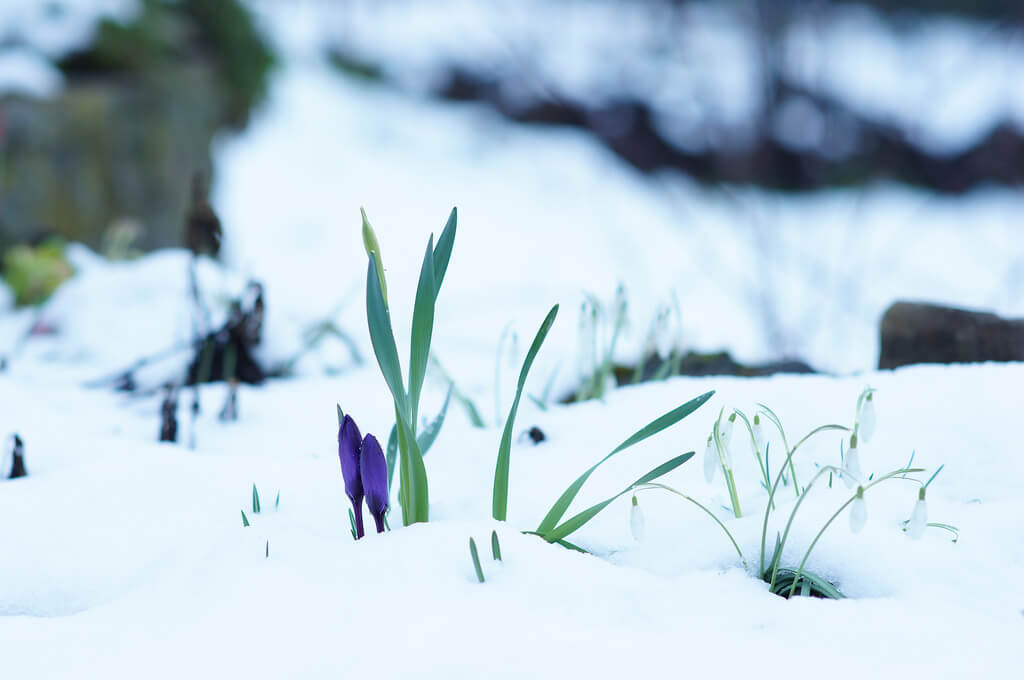
Tulip
Like crocuses, tulips show up in early spring, then disappear by summer. They grow from bulbs that continue to blossom every year in the spring. The world’s leading producer of these bulbs is the Netherlands, which produces around 3 billion bulbs every year, mainly for export. Hence, the Netherlands is the place to go for gorgeous photos of tulip fields, though you can also get pretty photos at one of the many tulip festivals around the world.
R Casey – another warm thought
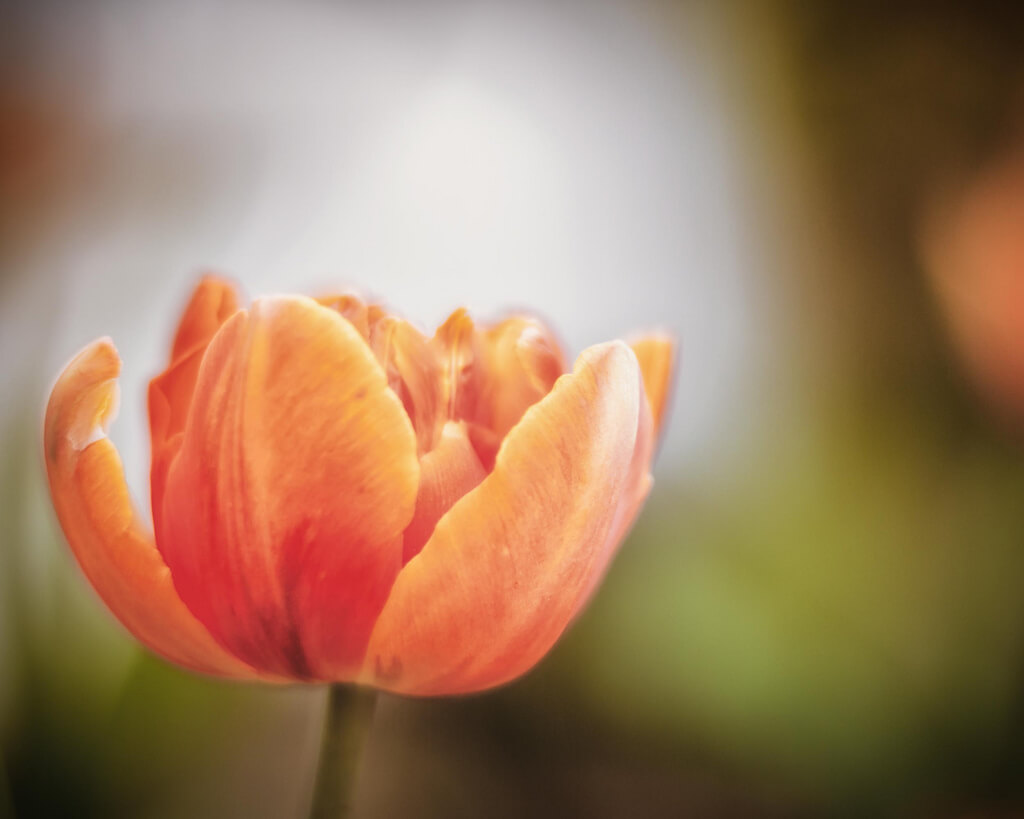
Daffodil
Like tulips, daffodils grow perennially from bulbs, primarily produced in the Netherlands. Though less popular than tulips, they’re still a common sight among spring flowers. Their bright color and distinct shape make them a ready subject for beautiful flower pictures.
Bluebell
In the British Isles, bluebells are the main marker of springtime. Though you can find bluebells elsewhere, they’re most abundant in the British Isles, where forests become carpeted with blue in the spring. It’s been voted the UK’s favorite flower, and after walking through a “bluebell wood” with your camera, it’s easy to see why.
sagesolar – Dancing beneath the trees
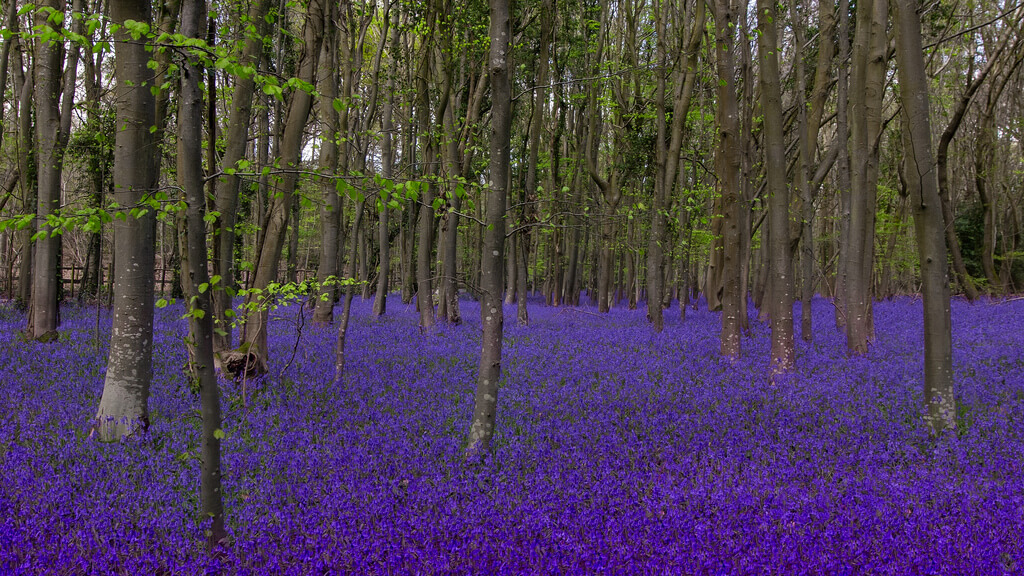
Poppy
Poppies have historically symbolized peace, sleep, and death, and that symbolism gives the flower a melancholy beauty. Its vibrant red color makes it a natural eye-catcher in pictures of flowers, particularly if you find them growing in a wheat field.
Chris Combe – Yorkshire Poppies

Fotis Mavroudakis – Lonely Poppy in Wheat Field
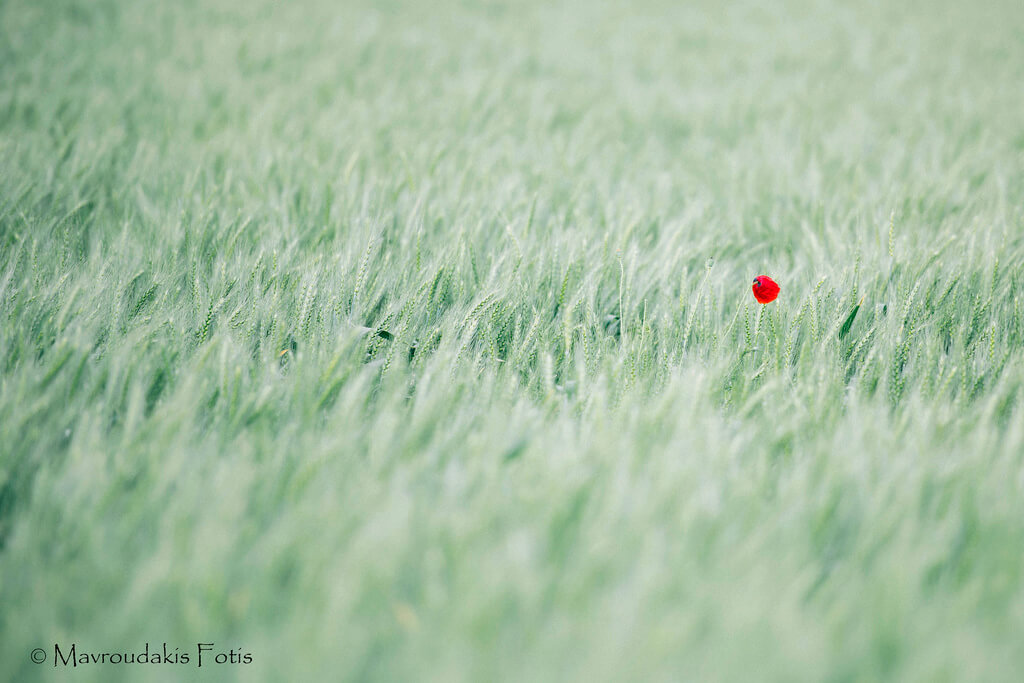
Lotus & Water Lily
Lotuses and water lilies share similar characteristics. Both are water plants with elegant flowers, which contrast beautifully against the dark water. One of their main differences is how high the flower reaches above the water. Water lilies sit on the water, while lotuses reach high above it. Either way, you can get great pictures of flowers with these aquatic plants.
Tuhin alom Photography – Lotus flower
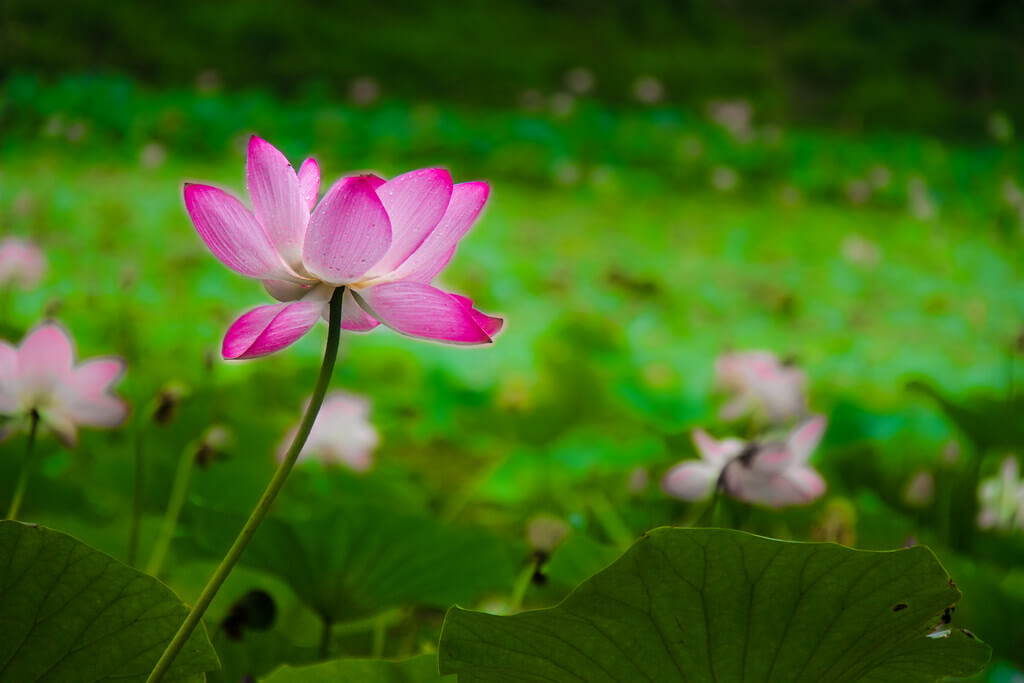
Nate Hughes – Bee flying into a waterlily

Forget-me-not
Forget-me-nots are an ideal subject for macro photographers. Their small size, simple shape, and soft color make them perfect for close-ups. They can be easy to miss, but when you do notice them, it’s worth stopping for a photo.
Morning Glory
As their name implies, morning glories usually bloom in the early morning, then fade throughout the day. Each flower blooms only once and dies within a day, so you have a short window to capture their colorful beauty. But if you manage to catch them at their peak, the shot will be worthwhile!
✿ nicolas_gent ✿ – ✽ Morning Glory ✽
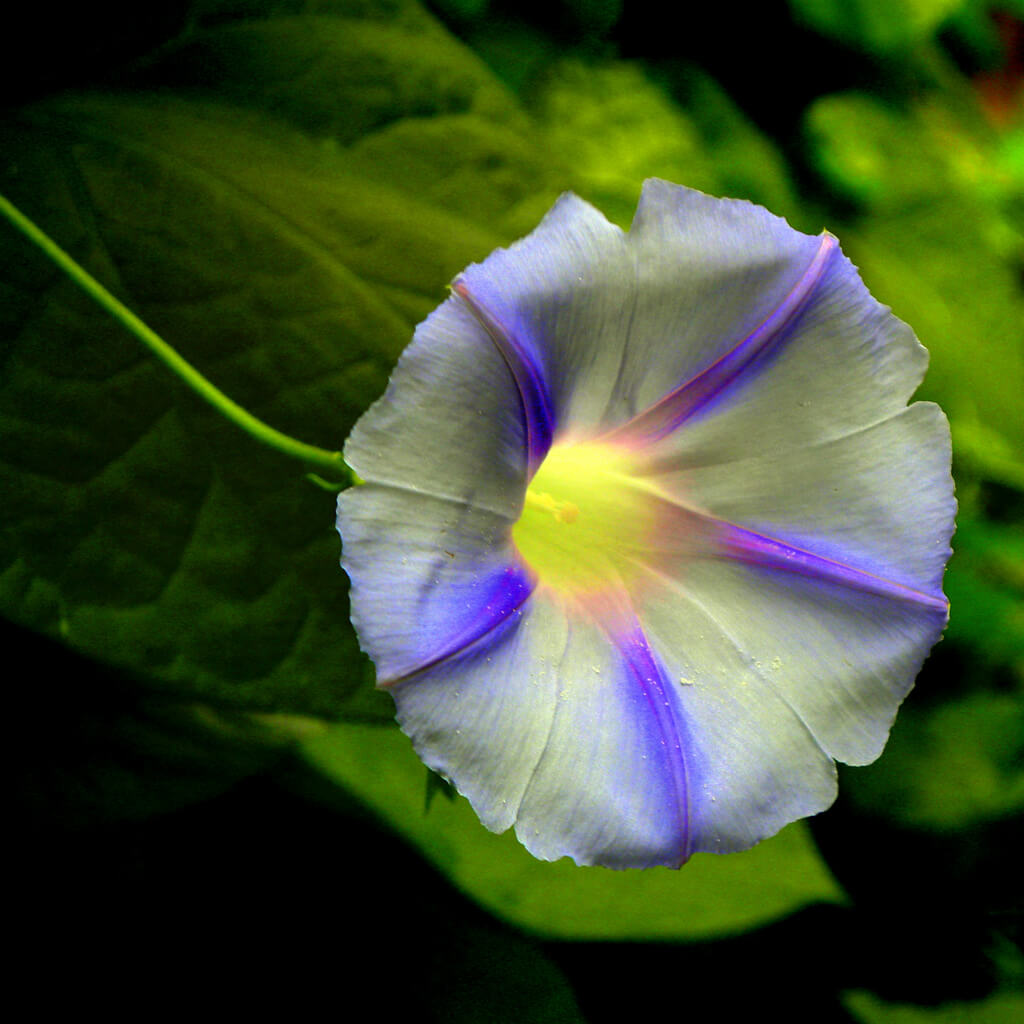
Hibiscus
Hibiscus flowers thrive in tropical and subtropical climates, where people go to relax and escape the winter cold. For this reason, they’re often associated with island vacations or tropical getaways. They have showy blossoms that come in all kinds of colors, making them a popular photography subject.
Galib Emon – HIBISCUS ROSA-SINENSIS Flower
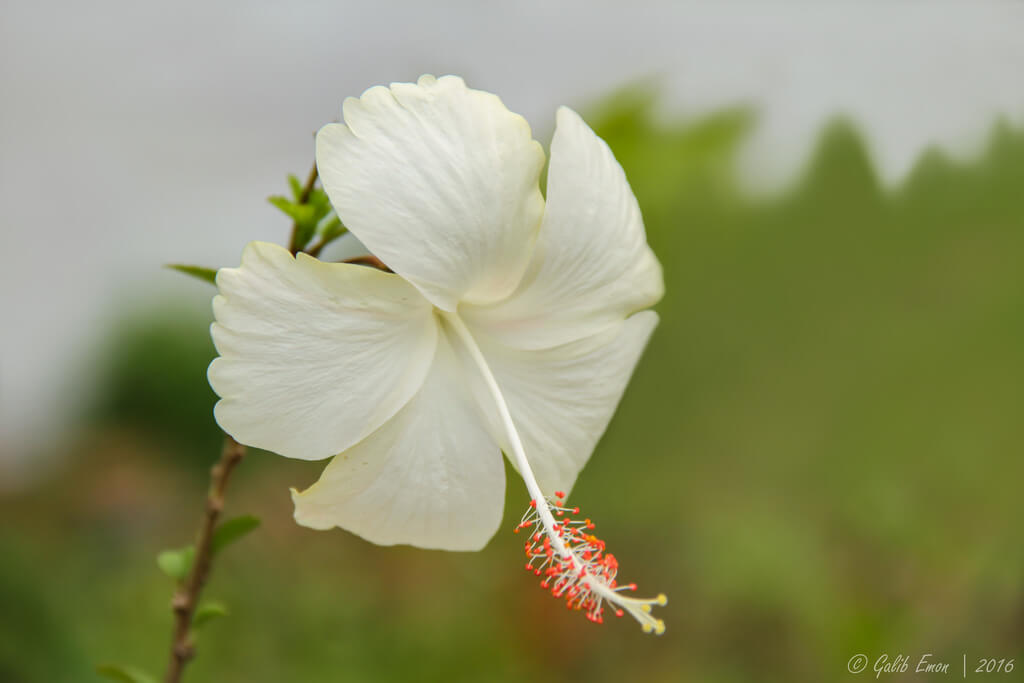
photobom – Hibiscus Flower on the horizon

Cherry Blossom
Cherry blossom trees turn into spectacular sights of beauty in the spring, especially when they’re planted together in orchards. Japan is the best place to visit for cherry blossoms, but you can find magnificent cherry blossom orchards and festivals throughout the world. Despite their name, the trees don’t produce edible cherries, but are mainly used for decoration – and, of course, beautiful pictures of flowers.
Lidija Bondarenko – Cherry blossom
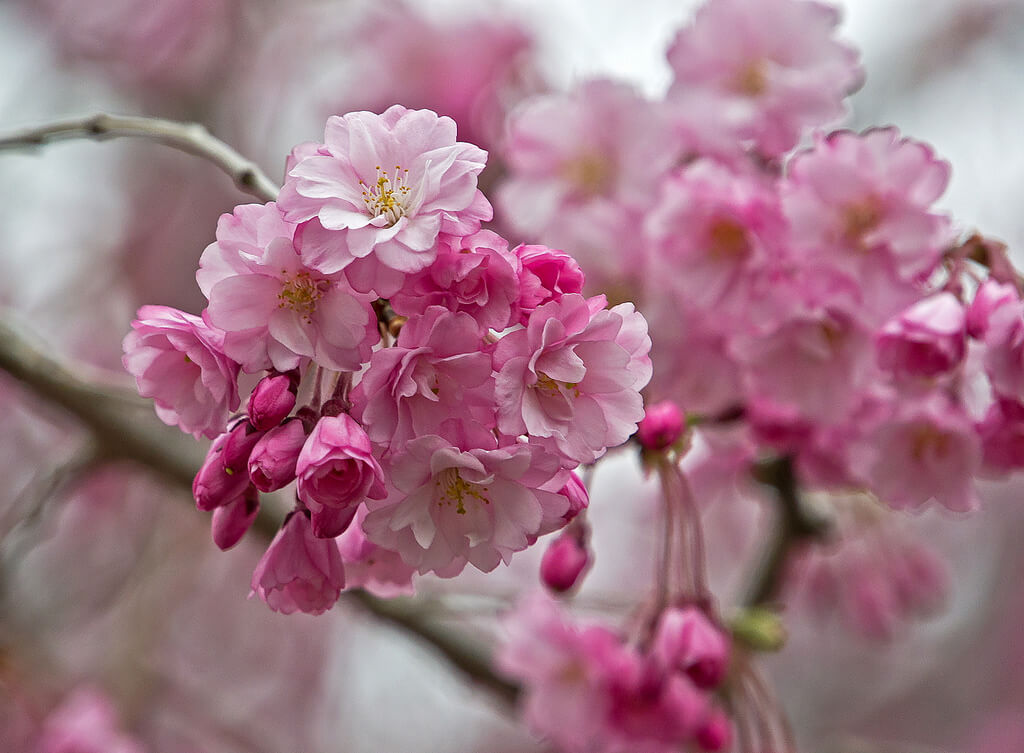
Magnolia
Magnolias are an ancient flower, one of the oldest in the world. They appeared before bees and have evolved to be pollinated by beetles instead. Because of this, the inside of the flower is pretty tough, so they aren’t damaged by the beetles. Though the blossoms look soft and delicate, the plant has been strong enough to survive for millions of years. And hopefully, for the sake of flower photographers and the future of pictures of flowers, it’ll continue thriving.
Many of the pictures of flowers above were selected from our creative Flickr community. Next time you get a nice flower photo, add it to the group so we can admire your work!
